September is a global shoulder season, and one of our favourite travel months. The European summer begins to fade into autumn colours, while the southern hemisphere is waking up to the birdcall of spring. The days are long enough for adventure and the sun stays high, punctuated, albeit, by the odd raincloud and an extra breeze which only serves to cool you down on hot hiking trails.
There are fewer visitors, so you have the area to yourself. There’s less waiting time. There is lower pricing.
Better yet, the crowds that come with summer in Europe and Africa, and in particular with July and August, largely disperse in September – and the sizzling heat, which can make adventure unbearable, also eases in the sunniest spots. This is the benefit of shoulder season; of travelling before the summer tourism boom begins in adventure hotspots like New Zealand, and just as often hectic destinations like Croatia, Italy and Spain bring an end to their high season.
“The locals are more relaxed because they’re under less pressure,” Ricardo Fahrig, an Albanian tourism expert, told me. He was talking specifically about the Albanian Riviera, but his words apply much more generally too. “There are fewer visitors, so you have the area to yourself. There’s less waiting time. There is lower pricing. I think you get a much more authentic insight because you won’t just meet foreign visitors, you’re going to meet a lot more locals too.”
Cheaper and less crowded, with more chance of an authentic travel experience.
Active adventure holidays | Much Better Adventures
Join like-minded people on an active, small group, tour.
Generally speaking, September is a good month for global travel, regardless of location (and especially if you own a good waterproof and don’t mind a little shower). In this list, we’ve picked out a range of destinations around the world which demonstrate exactly why – but if your dream destination isn’t on the list, don’t sweat it. There’s a good chance it wears September well too.
Here’s our guide to the best travel destinations in September – a month for seasoned travellers.
1. The Albanian Riviera, Albania
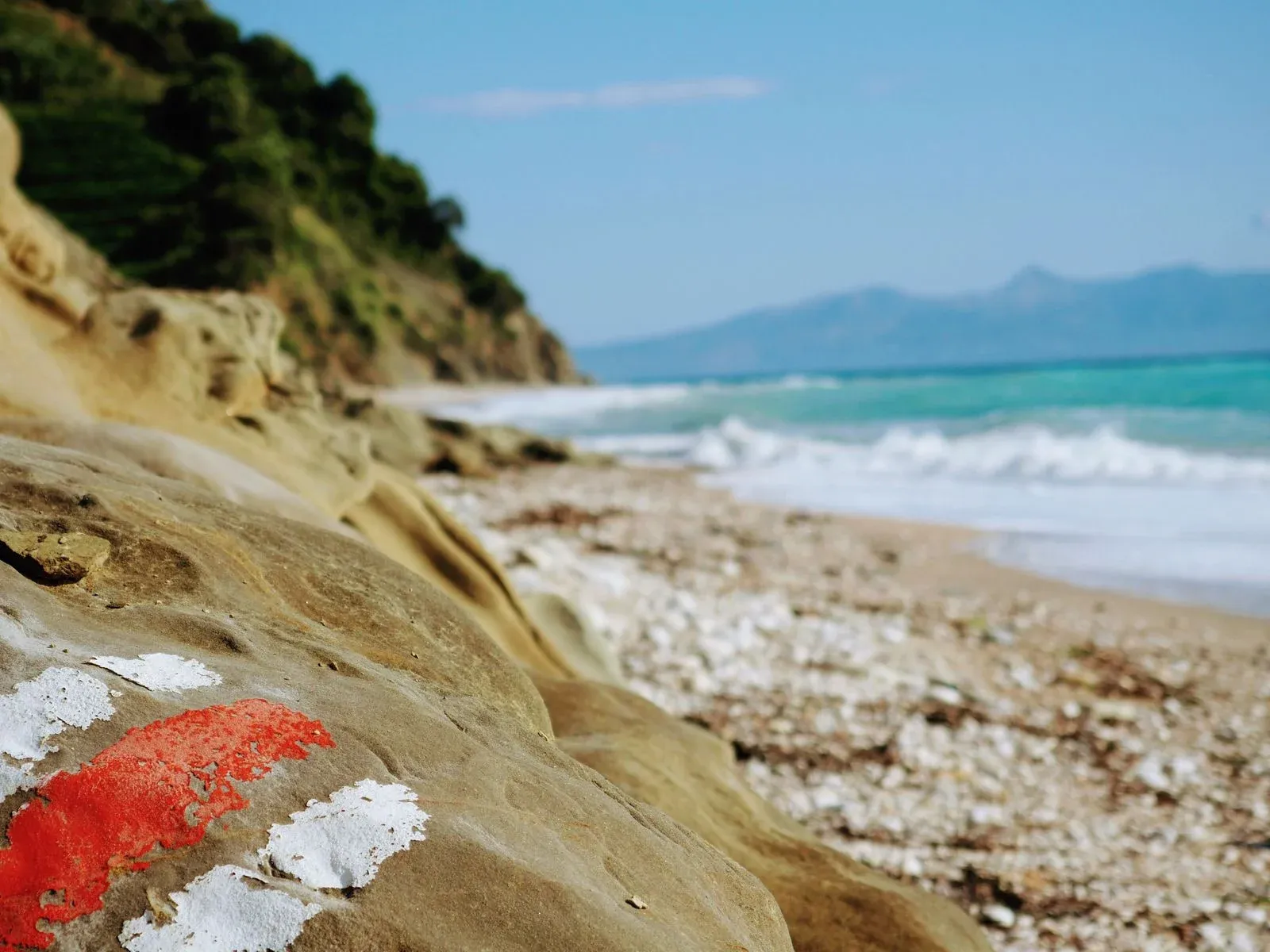
- Season: Summer/Autumn
- Temperature: 27°C high, 15ºC low (for Dhërmi)
- Time zone: GMT+2
- Currency: Albanian Lek
- Best for: Mixing coasts and mountains
Since we included a quote from Albanian trekking expert Ricardo Fahrig in our introduction, we’ll start in his neck of the woods. Albania is a dream destination for those seeking sun – the beaches are idyllic and the coast looks out to Corfu, across the Ionian Sea, so you get world class beauty at an affordable price – but with that has come elements of overtourism in the summer months.
The best way to experience the beauty of the Albanian coast? Get off the main drag and onto the hiking trails, and do it in the shoulder season, once the bulk of the tourists have left. Think olive groves, ghost towns, white sand beaches, ocean views and mountain backdrops, on quiet trails. “You only see the flashy, glitzy part of a beach resort in summertime,” says Ricardo Fahrig. “Here you get to see what really goes on without the crowds.”
How to get there? The closest international airport to the Albanian Riviera is in Tirana, the Albanian capital, and is 75 miles (121km) away. The Riviera is a four hour bus from here.
Hike the Coastal Trails of the Albanian Riviera | Much Better Adventures
Join a small group trip to hike untrodden trails from coastal mountains down to hidden coves on Albania’s shimmering riviera. Led by local experts.

2. The Dalmatian Coast, Croatia
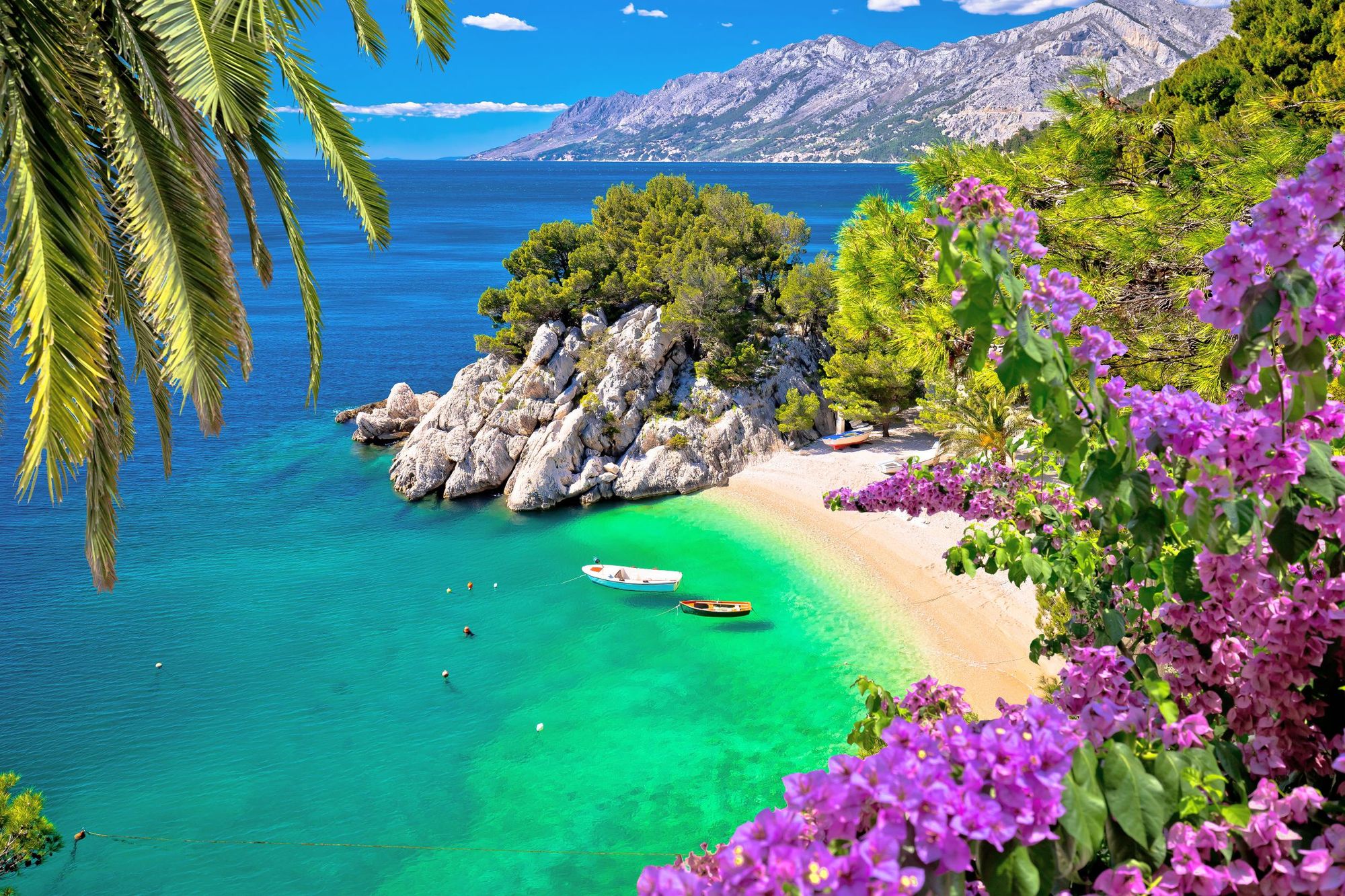
- Season: Summer/Autumn
- Temperature: 25°C high, 16ºC low
- Time zone: GMT+2
- Currency: Euro
- Best for: Perfect paddling
The Dalmatian Coast is one of Croatia’s four historical regions, sitting on the west of the country and on the eastern edge of the Adriatic Sea. The coast is narrow but long, and owing to the fact that it’s covered largely by the Dinaric Alps – as well as being home to 79 islands and around 500 islets, just off shore – it’s a real adventure hub. The most famous cities on the coastline are Split, Zadar, Šibenik and Dubrovnik – the latter of which in particular, partly due to Game of Thrones-related tourism, is famously busy in the summer months.
Visit the coastline in September, though, and choose to paddle, and you can see the beauty of this wonderful coastline (and the historic cities along the way) in peace. The water will still be warm enough to tempt you in for a swim.
How to get there? The best international airports for the Dalmatian Coast are Split or Dubrovnik, naturally depending on where on the coast you are planning to visiting.
Sea Kayak Croatia’s Dalmatian Coast | Much Better Adventures
Join a small group of like-minded adventurers to paddle along the Pelješac Peninsula and Korčula Island, swim in clear waters and explore quaint towns.
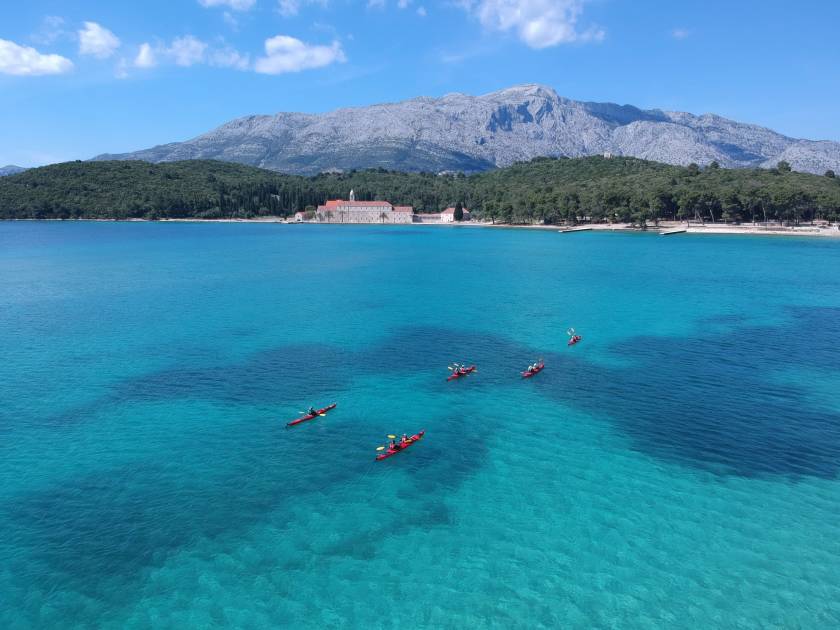
3. Sardinia, Italy
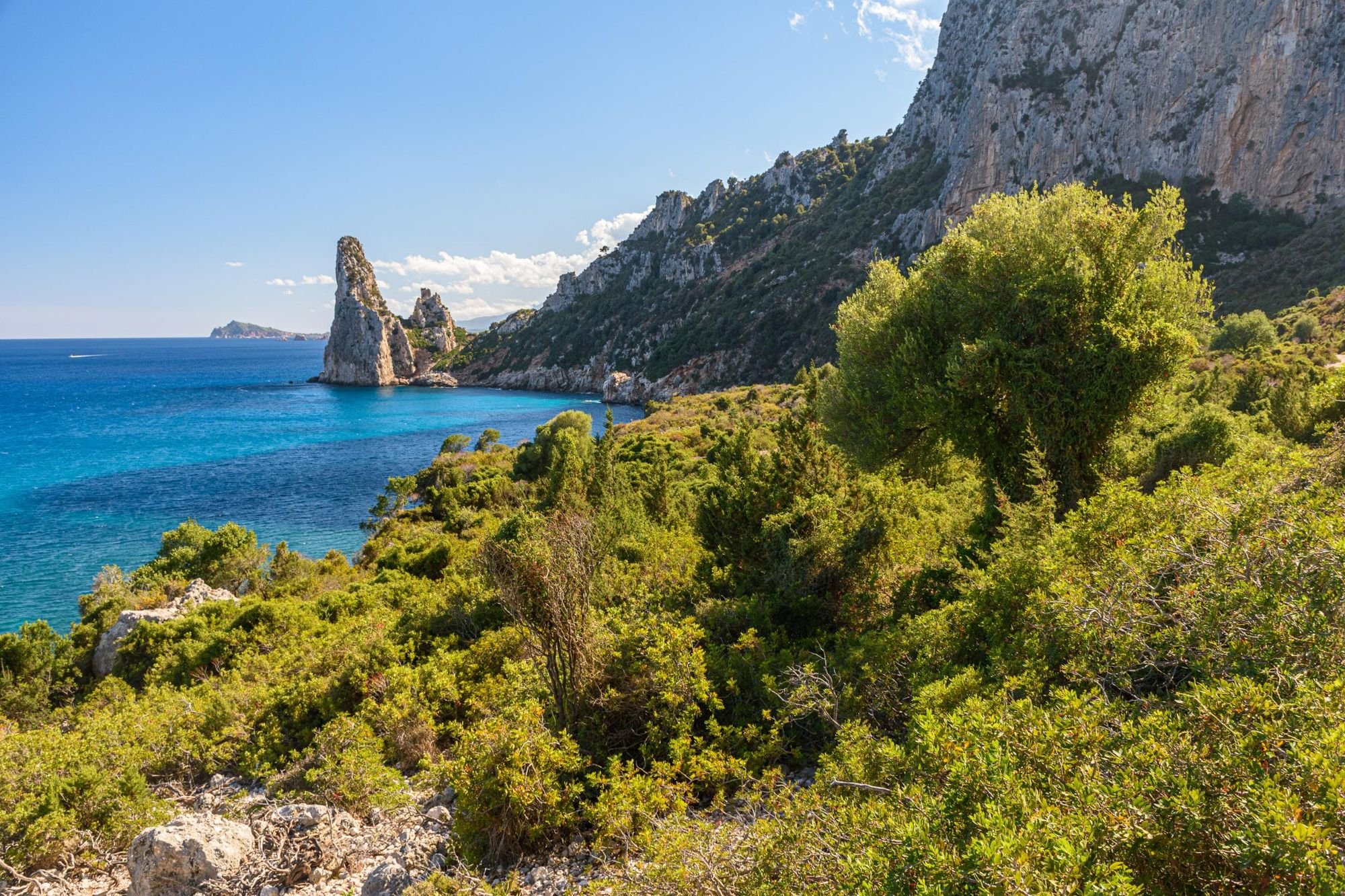
- Season: Summer/Autumn
- Temperature: 27°C high, 18ºC low
- Time zone: GMT+2
- Currency: Euro
- Best for: A proper challenge in a beautiful place
When a lot of people think of Sardinia they think of all-inclusive resorts and sun loungers. We do not. Dig deeper on this sun-soaked Italian island and you’ll soon begin to hear tales of the Selvaggio Blu – a 25 mile (40km) trail with 4,200m (13,779ft) of vertical gain, five abseils and two via ferratas. No wonder it’s known as the toughest trek in Italy. This is an emphatically beautiful trail, and it’s also one that will test you in a lot of different ways, from technical climbs or descents, to your regular mental and physical challenges of hiking. We wouldn’t advise doing it in July or August, though. It’s too hot, and it can be crowded. Pick September instead.
How to get there? Cagliari Elmas Airport is the largest airport on the island of Sardinia.
Trek the Selvaggio Blu Trail in Sardinia | Much Better Adventures
Book now to join an expert mountain guide to tackle Italy’s most challenging trek with thrilling climbs, scrambles and abseils on a small group adventure.
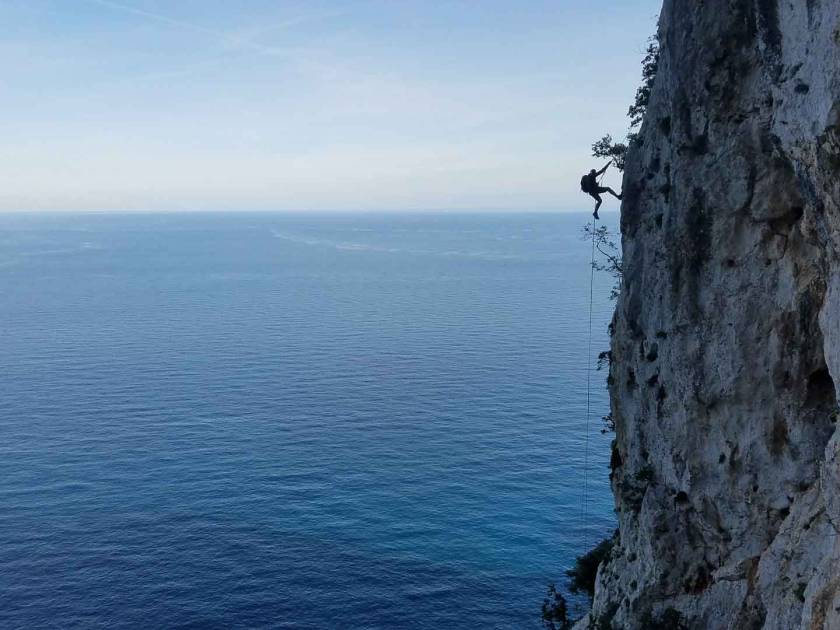
4. Picos de Europa, Spain
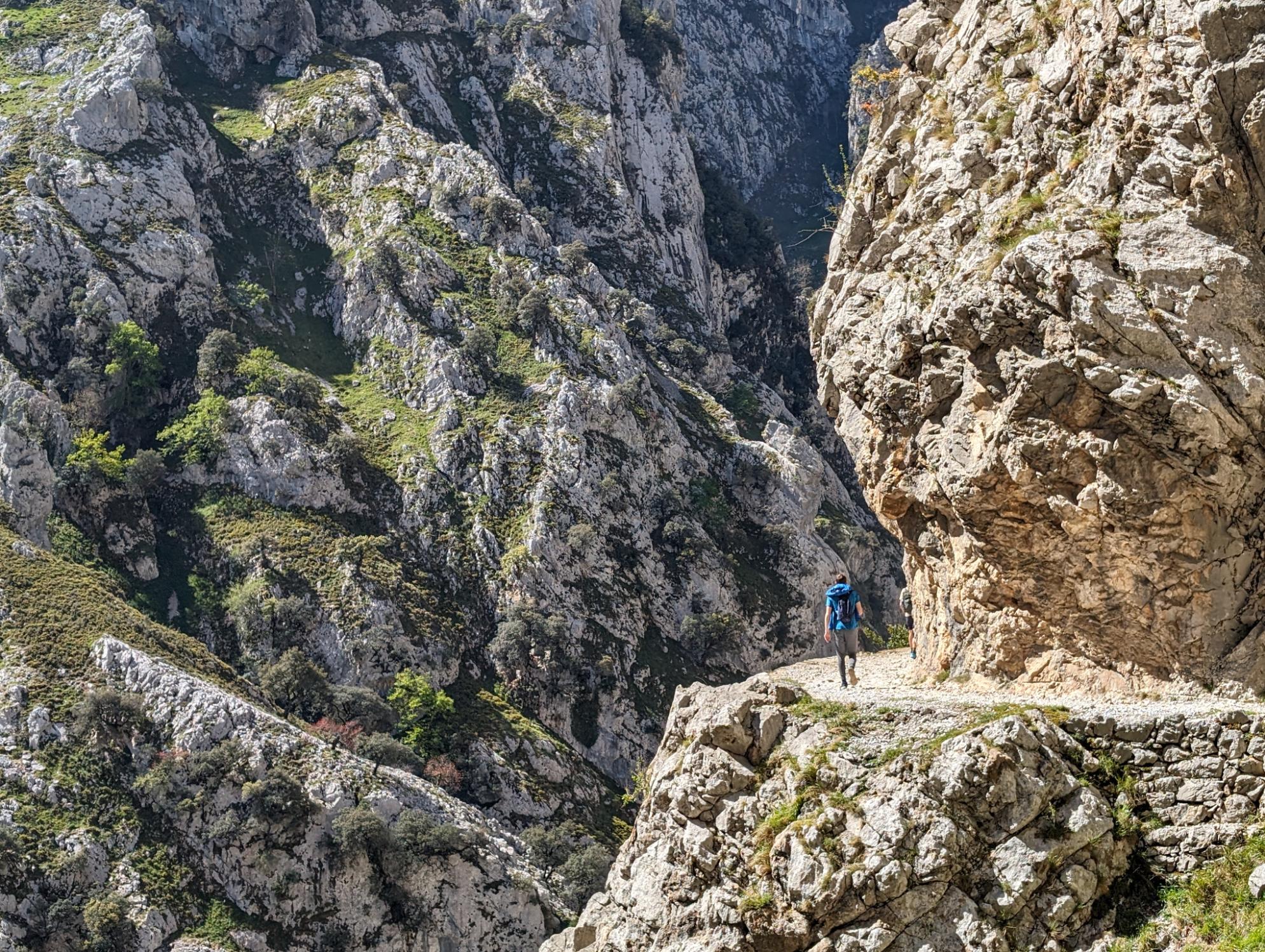
- Season: Summer/Autumn
- Temperature: 23°C high, 14ºC low
- Time zone: GMT+2
- Currency: Euro
- Best for: A lesser known side to Spain
Situated in the north of Spain, the Picos de Europa are a small but mighty mountain range and national park. This spot has long been famous with serious rock climbers, but in recent years, it’s also gained a big reputation within the wider adventure world. It’s a place of canyons, rivers, forests and rugged peaks – so it makes a lot of sense for those interested in doing a few different adventure activities while out on a trip.
Visit the Picos in September and you’ll find that the weather remains decent (though do note that the north of Spain is rainier and chillier than the south), there’s still plenty of daylight and even the most popular trails, like the famous Ruta del Cares, are really only populated by locals.
How to get there? The Picos de Europa are served by various airports. Santander and Asturias Airport are around a 90-minute drive from the Picos de Europa. Bilbao Airport is an hour further.
Hut-to-Hut Trekking Adventure in Spain’s Picos de Europa | Much Better Adventures
Tackle an epic route through Northern Spain’s hidden gem of a mountain range on a small group holiday with expert local guides in Asturias and Cantabria.

5. The Cairngorms, Scotland
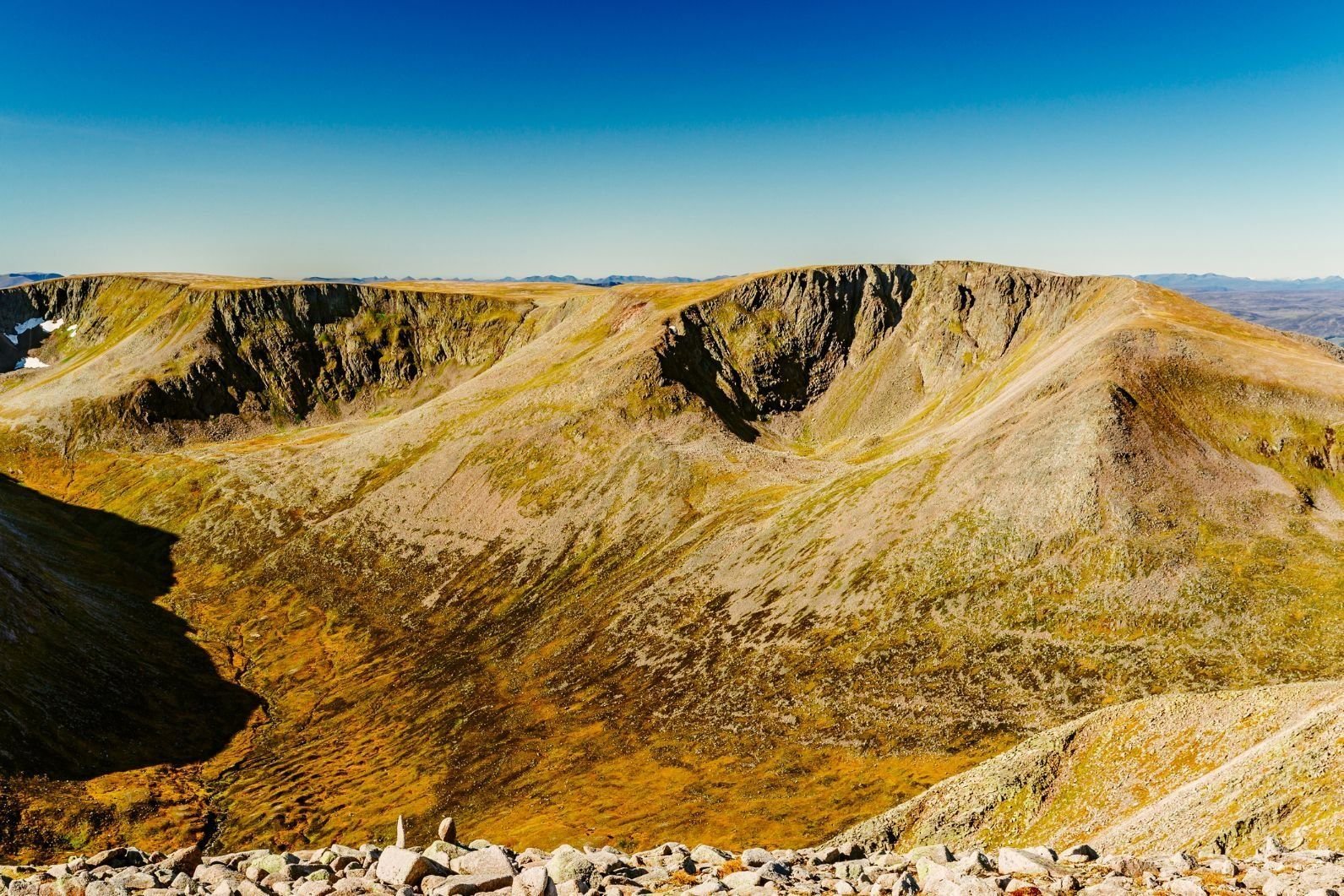
- Season: Summer/Autumn
- Temperature: 15°C high, 4ºC low (for Aviemore)
- Time zone: GMT+1
- Currency: British Pound
- Best for: A Highland adventure
The Cairngorms are the adventurous heart of Scotland. Within the national park, you can do all sorts – from rafting and kayaking on the Spey to mountain biking on flow trails to hiking up the UK’s second highest peak, Ben Macdui, which stands 1,309m (4,296ft) tall.
I’ve been hiking in Scotland for all of my life, and when I plan a long-distance trek with friends, I usually aim for September. This is for the same reasons as most other spots on this list. While the weather may be a little more erratic (though it’s hardly predictable in the height of summer), you’ll find the trails in Scotland significantly emptier in September than you will in July or August. There’s another big benefit to walking in September too: less midges.
As the Cairngorms enter autumn, the red and yellows begin to come out, and if you’re camping, you’ll begin to hear rutting stags. There are mushrooms to be picked, too (careful now).
How to get there? The train station in Aviemore is well served by services from across the UK. The closest airports are Aberdeen and Inverness, though Edinburgh and Glasgow also work.
Summit to Sea Expedition in Scotland | Much Better Adventures
Join a small group adventure, hiking and canoeing from the Cairngorms to the North Sea, via the rapids of the River Spey. Led by expert, local guides.
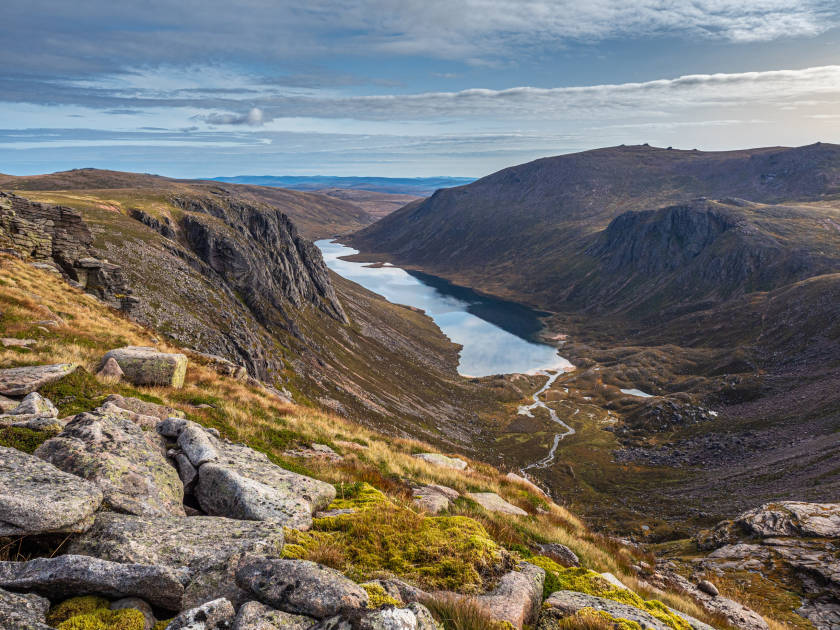
6. The Galapagos Islands, Ecuador
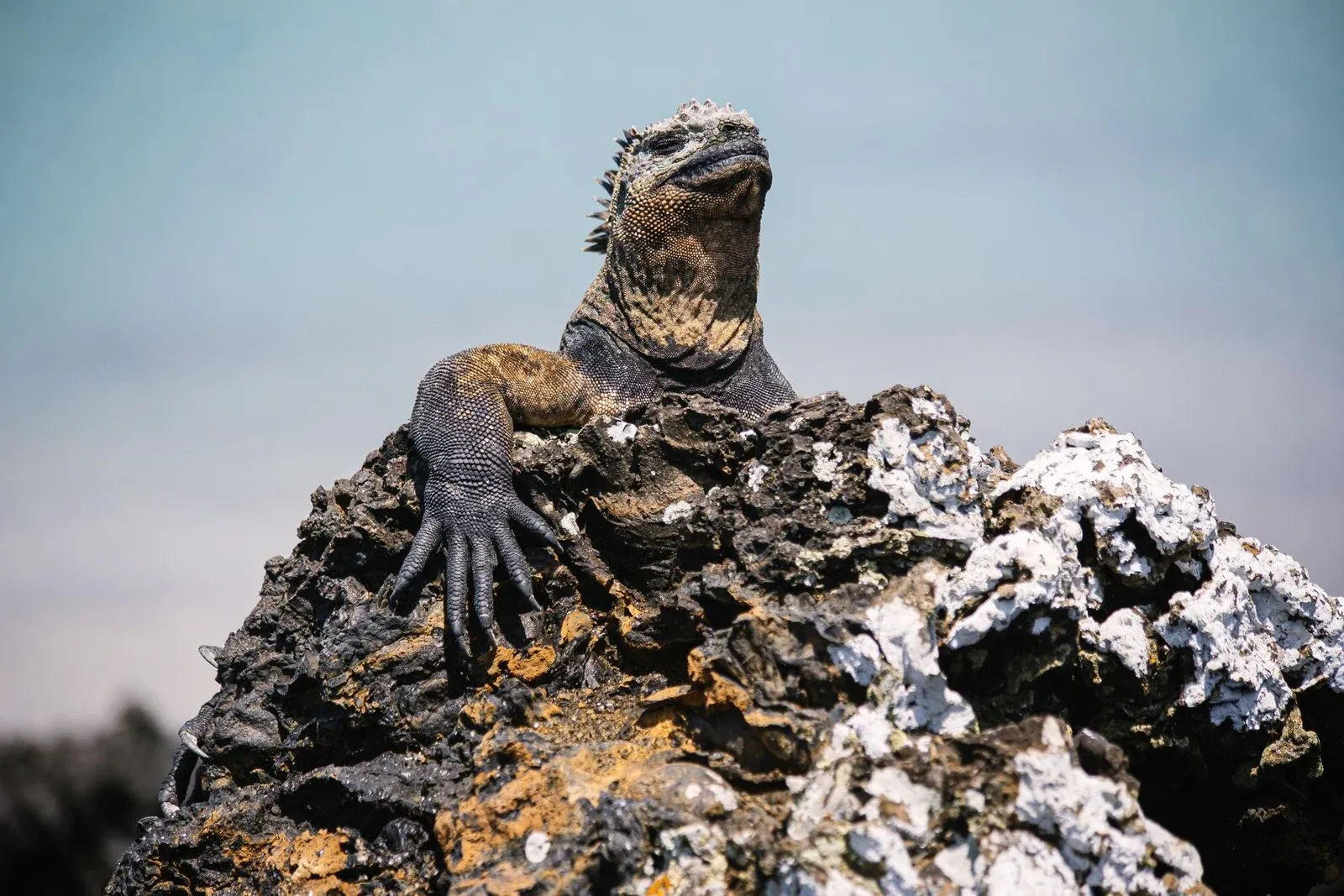
- Season: Dry season
- Temperature: 27°C high, 19ºC low
- Time zone: GMT-5
- Currency: US Dollar
- Best for: Marine wildlife
The Galapagos Islands are a year-round destination for wildlife lovers. “You’ll see wildlife even if you don’t do any specific activity,” says Henry Sisa, a Quito-based guide who has led tours in Galapagos. The most famous residents are perhaps the Giant Tortoises, but if you go in September, you’ll find the marine wildlife particularly active too. September is the coolest and driest month on the islands, and with that comes cold water currents that bring nutrients to the surface of the water. It’s not cold – but it does mean you have a better chance of spotting whales and dolphins, for example. Plus, if you go snorkelling, you might end up swimming with sea lion pups. All this marine life brings a lot of birds out too. You’ll see Albatross chicks dotted around.
How to get there? The Galapagos Islands are reached from Ecuador. Most people fly from the capital of Ecuador, Quito, to Baltra Island in the Galapagos. It’s a gorgeous flight.
Island Hopping Adventure in the Galapagos | Much Better Adventures
Join local experts for a Galapagos Islands adventure. Hike, bike and snorkel the unique archipelago on an action-packed adventure immersed in the natural world.
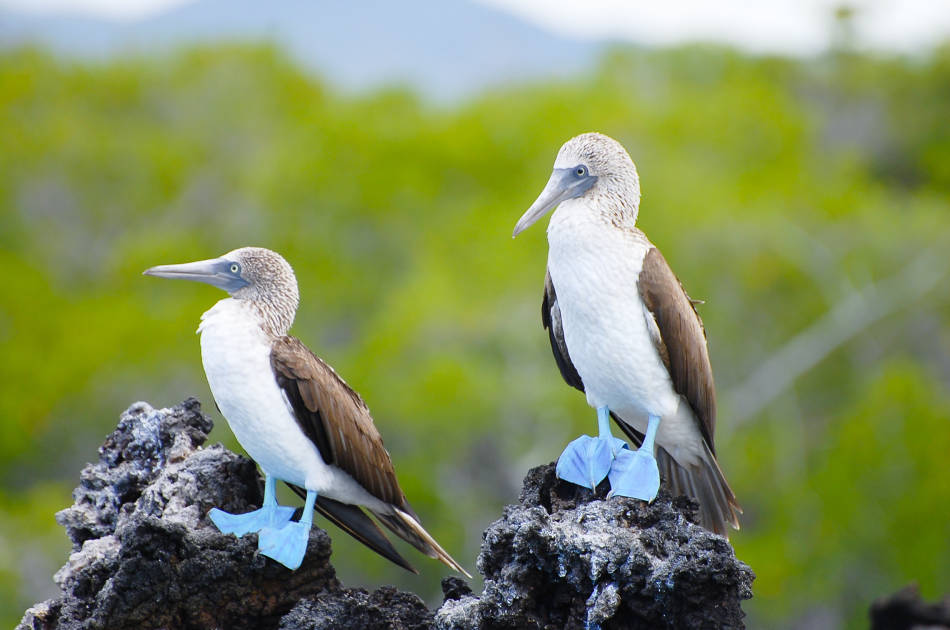
7. Machu Picchu, Peru
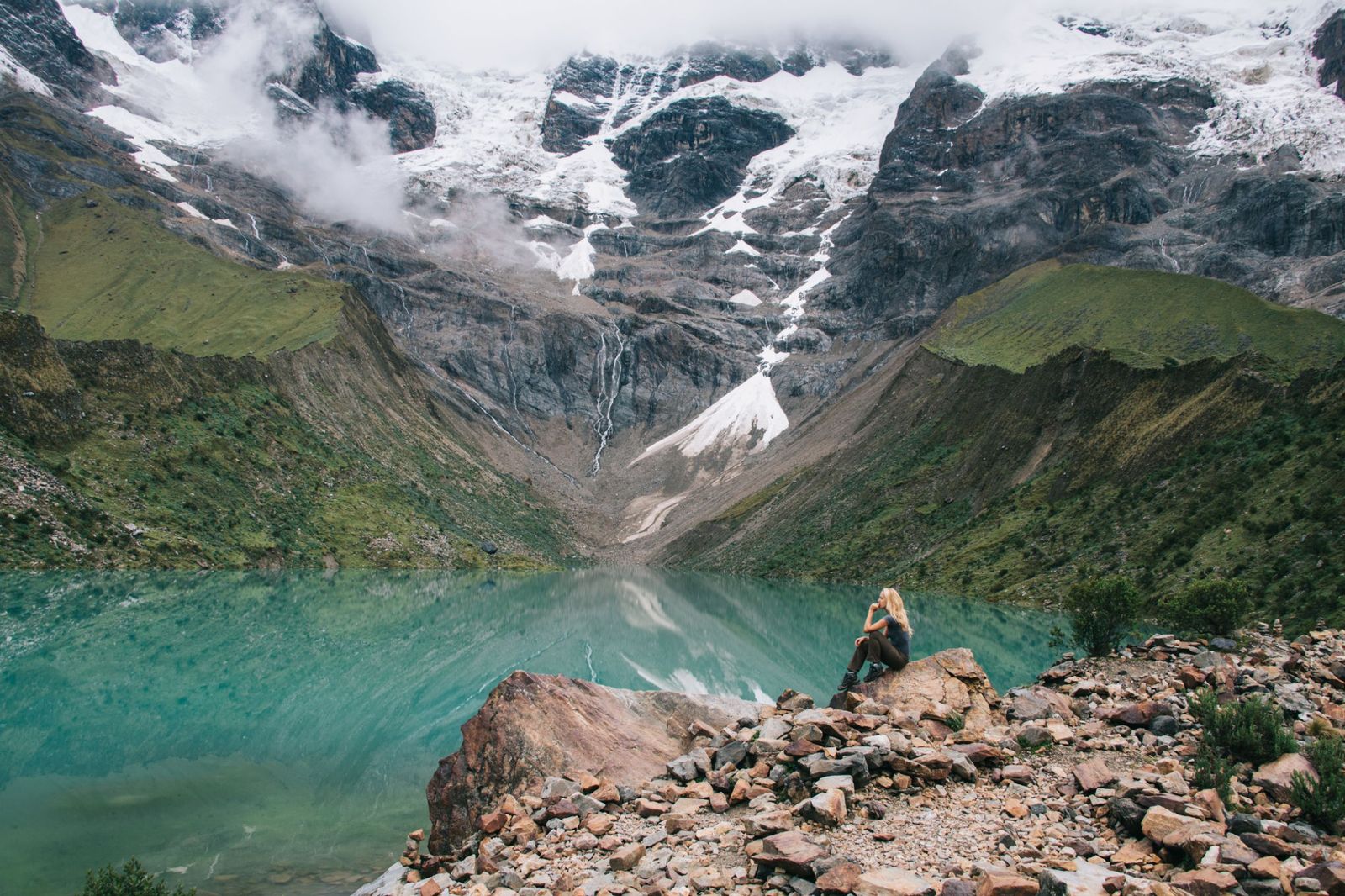
- Season: Dry season
- Temperature: 9°C high, -3ºC low
- Time zone: GMT-5
- Currency: Peruvian Sol
- Best for: Avoiding peak season at an iconic site
Machu Picchu is legendary, but this ancient Incan site, surrounded by mountain peaks, is also well known for being crowded.
Visit Machu Picchu in September, the shoulder season, and at least some of those crowds will have dispersed, but the weather will be largely the same. Naturally, the Inca Trail is the busiest route up to Machu Picchu at any time of year. We’d recommend looking at the Salkantay Trek instead, or if you’re really after a challenge, take a look at the trek to Choquequirao first.
How to get there? Cusco, the gateway city to Machu Picchu, is reached from the Peruvian capital of Lima. From Lima, you can fly to Jorge Chavez Airport or it’s an overnight bus.
Trek to Choquequirao and on to Machu Picchu | Much Better Adventures
Join a small group of hikers and an expert guide in Peru to trek to the ancient citadel of Choquequirao, Machu Picchu’s lesser-known ‘sacred sister’.
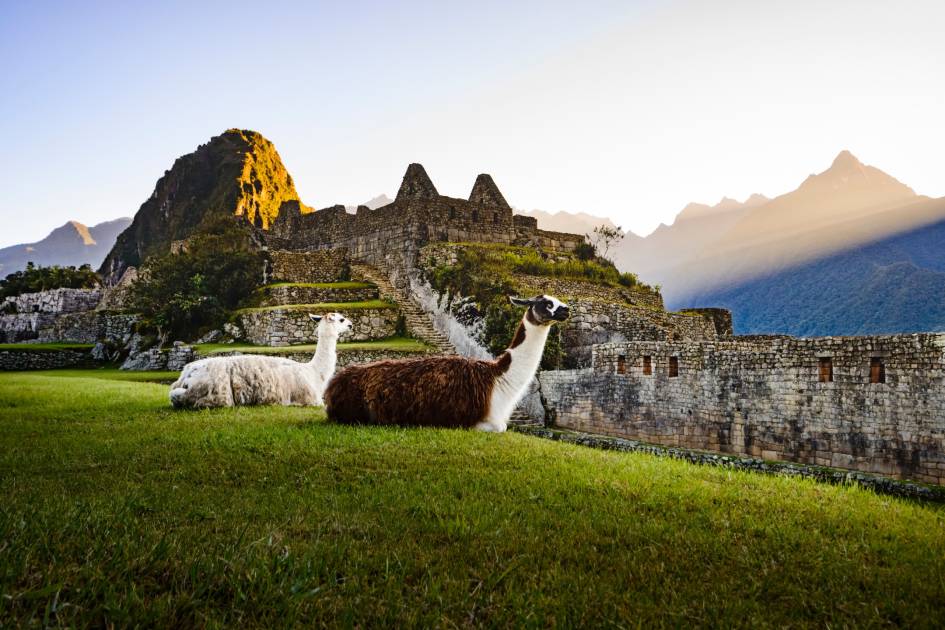
8. The Drakensberg Mountains, South Africa
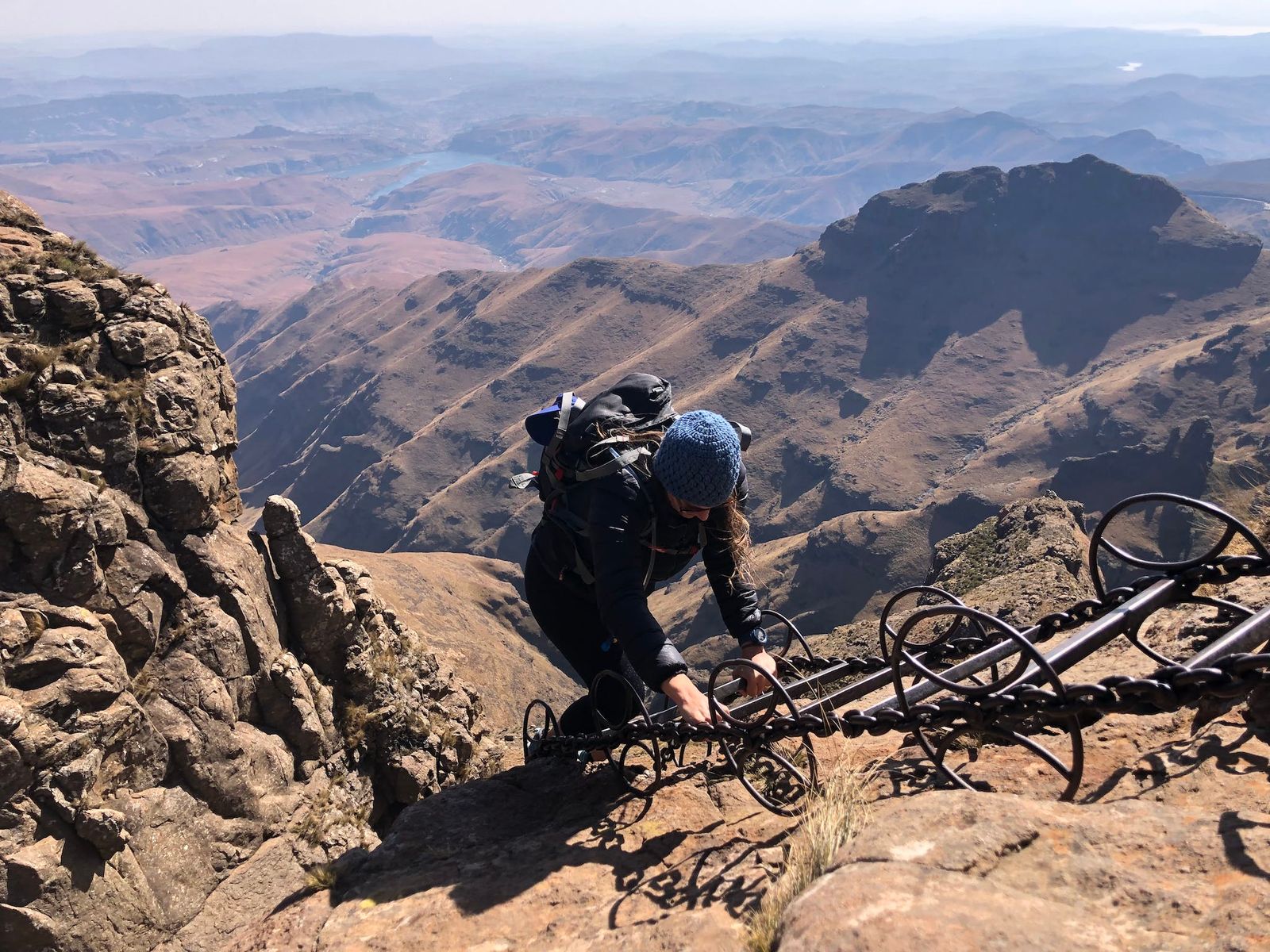
- Season: Winter/Spring
- Temperature: 20°C high, 7ºC low
- Time zone: GMT+2
- Currency: South African Rand
- Best for: A demanding African adventure
The Drakensberg is a sight to behold; a great green wall, rising up over rolling hills and rivers and forming the natural border between South Africa and Lesotho. The hiking trails here are serious and strenuous. Some of the higher reaches are accessible only by chain ladders.
September (as well as October) in the Drakensberg is a happy medium. Spring arrives, and with it the greens get more vibrant and the flora bursts with colour. The birds chirp, the rainfall stays low during this time and you’ll also be getting in before the thunderstorms come in summer.
How to get there? The best way to reach the Drakensberg is to fly into King Shaka International Airport in Durban or the O.R. Tambo International Airport in Johannesburg.
Hike, Kayak and Wild Swim South Africa | Much Better Adventures
Join expert guides to hike, paddle and swim your way from the Drakensberg Mountains to the Wild Coast with a small group of like-minded adventurers.
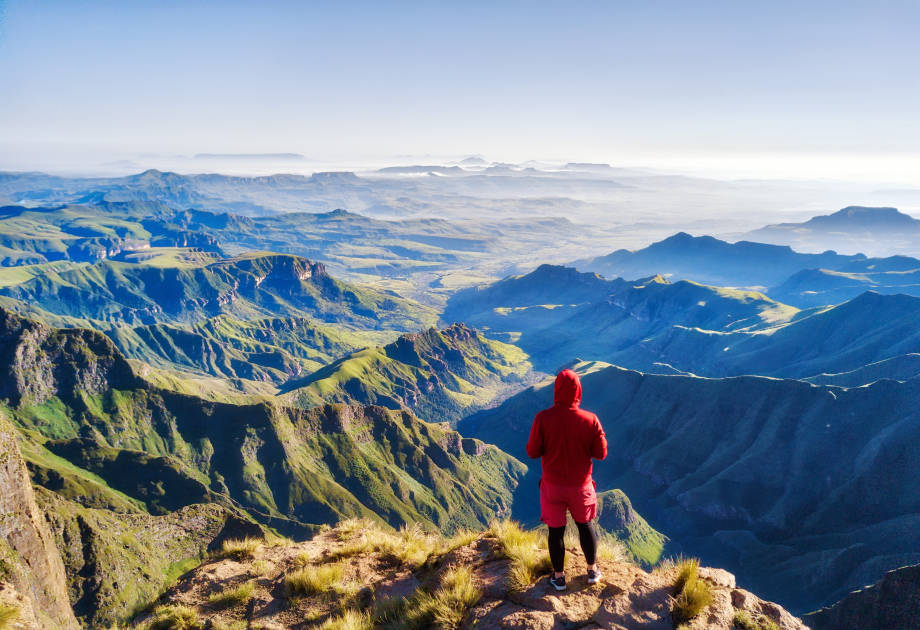
9. Mount Kilimanjaro, Tanzania
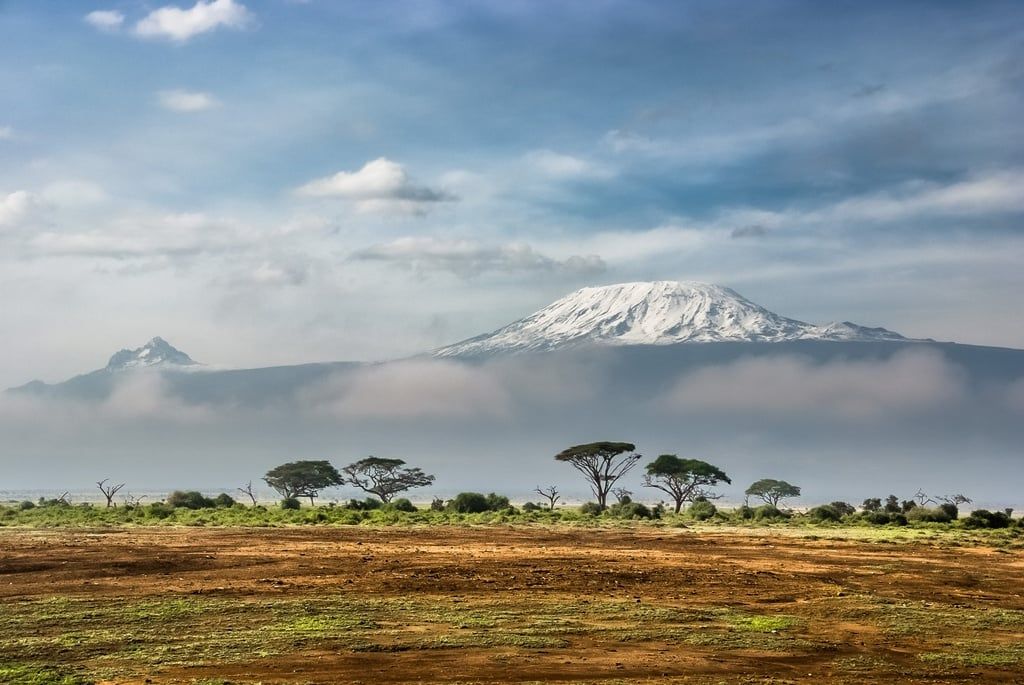
- Season: Dry season
- Temperature: 29°C high, 17ºC low
- Time zone: GMT+3
- Currency: Tanzanian Shilling
- Best for: Big summit baggers
The pull of climbing Africa’s highest mountain, the mighty Kilimanjaro (5,895m/19,340ft) is obvious. This is one of the world’s great peaks, and the highest summit of an entire continent. As though that wasn’t already enough of a pull, the area that Kilimanjaro looks out over is home to some of the world’s most iconic animal species. In Amboseli National Park, 30 miles away, roam leopards, lions, cheetahs, buffalo, elephants and so much more. So, why September?
Climbing Kilimanjaro is not easy, but by opting to do so in September, you actually increase your chances of a successful ascent. This is because the temperatures are a little cooler and you’re unlikely to see rain. It’s also not quite as busy in September as it can be in July or August.
How to get there? You can fly into Kilimanjaro airport, which serves Moshi, Marangu and Arusha. Or you can fly to Nairobi or Julius Nyerere International Airport in Dar es Salaam.
Climb Kilimanjaro via the Lemosho Route in 10 Days | Much Better Adventures
The Lemosho route has one of the highest summit success rates for climbing Kilimanjaro. Book your trip today! Small groups. Expert guides.

10. The Atlas Mountains, Morocco
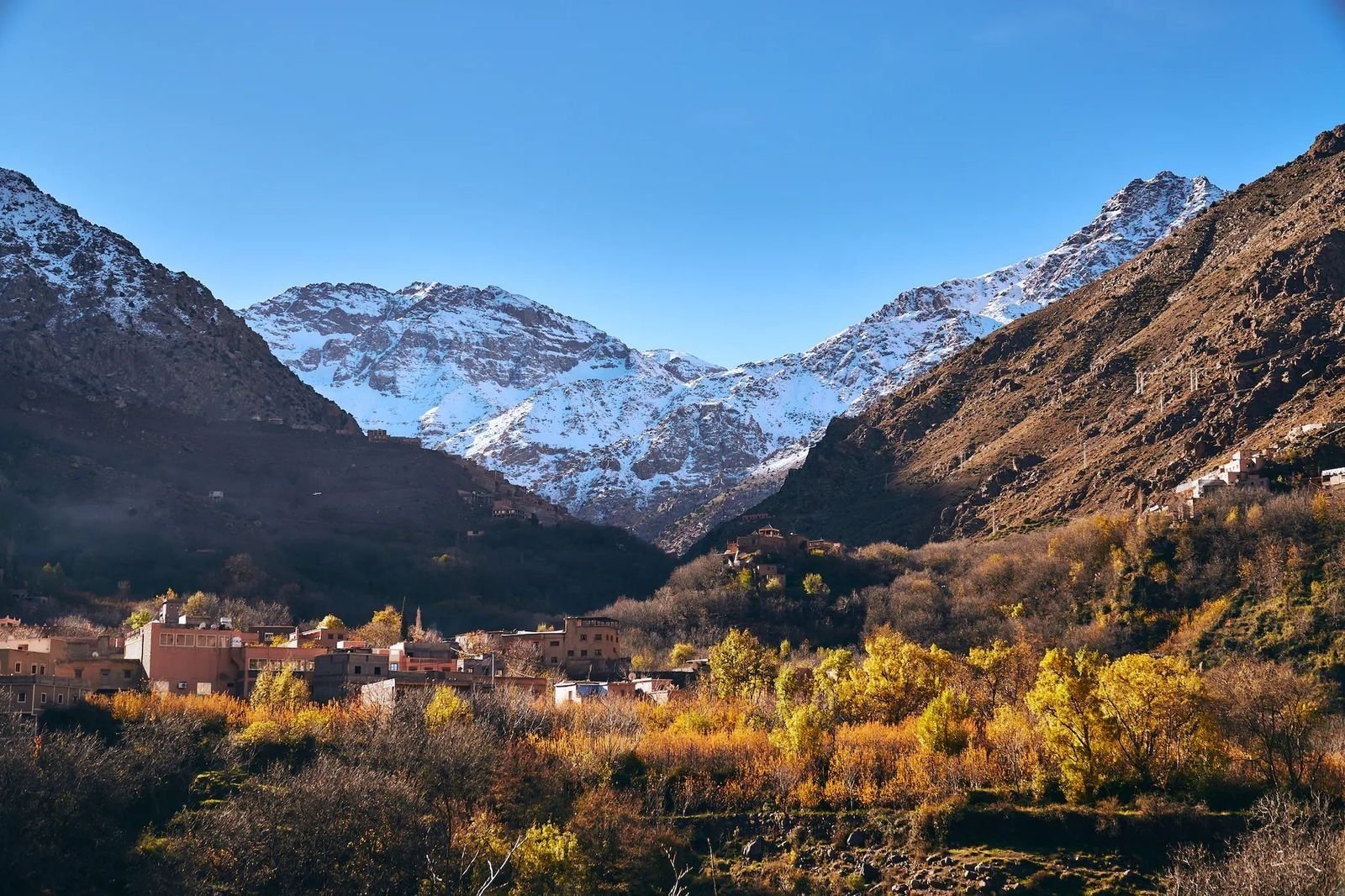
- Season: Summer/Autumn
- Temperature: 32°C high, 18ºC low
- Time zone: GMT+1
- Currency: Moroccan Dirham
- Best for: A big weekend adventure
The Atlas Mountains are a hiker’s dream. We’re particularly big fans of Mount Toubkal, which at 4,167m (13,665ft) is the highest peak in Morocco and North Africa. The ascent of Toubkal is a two-day climb, with an overnight at a high refuge en route. Being such a high peak, the seasons have a big impact on the ascent of Toubkal. Do so in January or February, for example, and you’ll be hiking through snow, which can be a wonderful experience if you’re up to the task.
The prime hiking season runs from April to September, though. Go in September and the top of Toubkal may still be touched with a little snow, making it a hike of real contrast. Do note that out of summer, Morocco can get cold, particularly up high in the mountains, so pack appropriately.
How to get there? Most people visiting the Atlas Mountains first fly into Marrakech Airport.
Climb Mount Toubkal | Much Better Adventures
Summit Mount Toubkal on a locally guided trek with a small group of like-minded adventurers. Book now. Meals, accommodation and transfers all included.

11. Etosha National Park, Namibia
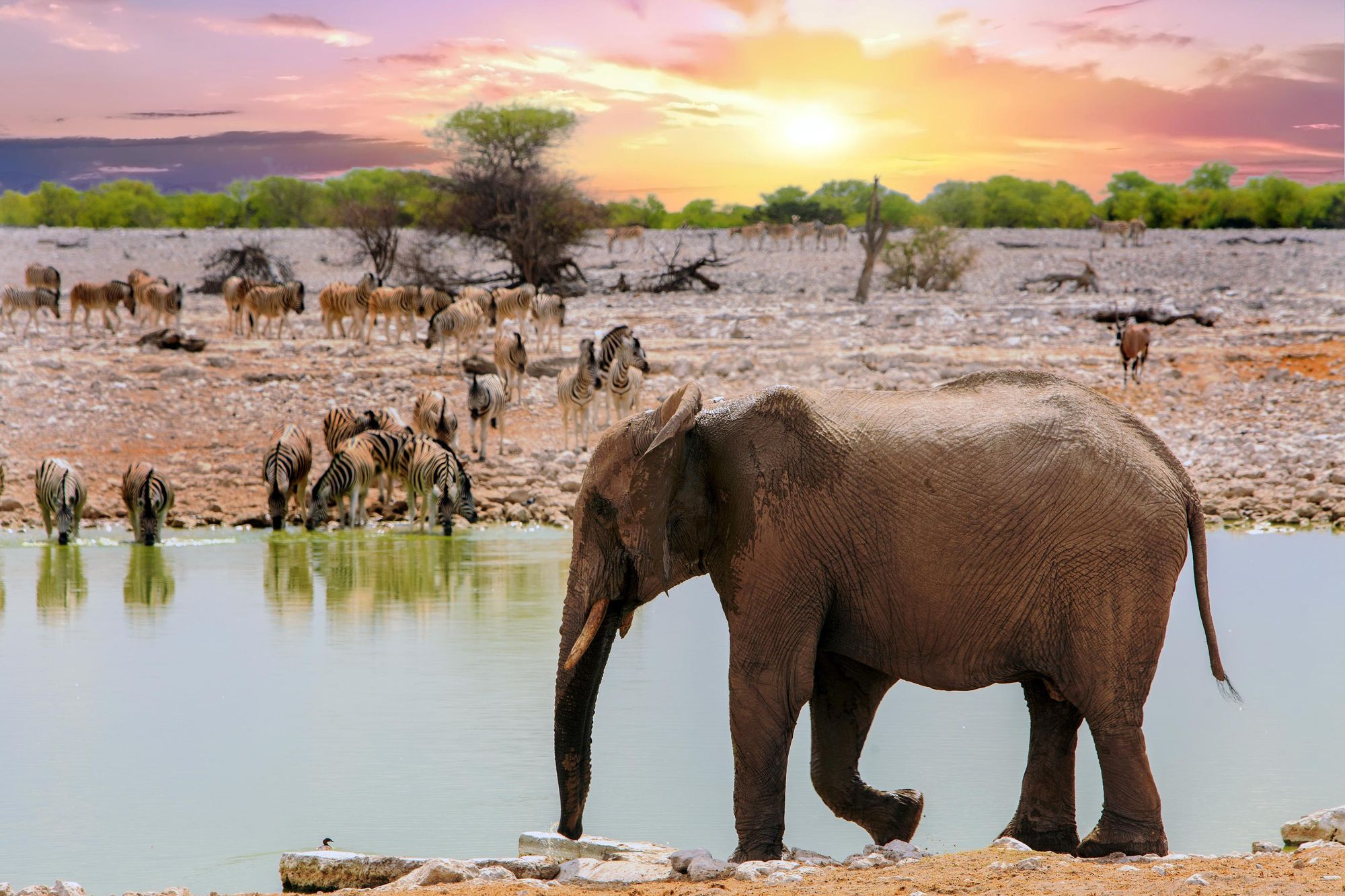
- Season: Dry season
- Temperature: 35°C high, 14ºC low
- Time zone: GMT+2
- Currency: Namibian Dollar
- Best for: Primetime animal watching
Visiting Etosha National Park is all about wildlife watching and safari. This is a dreamland of lions, leopards, elephants, giraffes, cheetahs, hyenas, rhinos, zebras and so much more. There is a particularly notable population of black rhinoceros here. Visit in September and you’ll be coming in the prime dry season viewing time. Head to watering holes and you’re guaranteed to see a superb selection of wildlife. It is going to be hot though – with highs exceeding 30°C.
How to get there? Windhoek International Airport is the gateway to adventures in Namibia.
Desert to Delta Journey in Namibia and Botswana | Much Better Adventures
Join a small group adventure for the ultimate Africa combo – via towering sand dunes, the Kalahari Desert and wildlife-packed national parks.

12. The Island of Mauritius
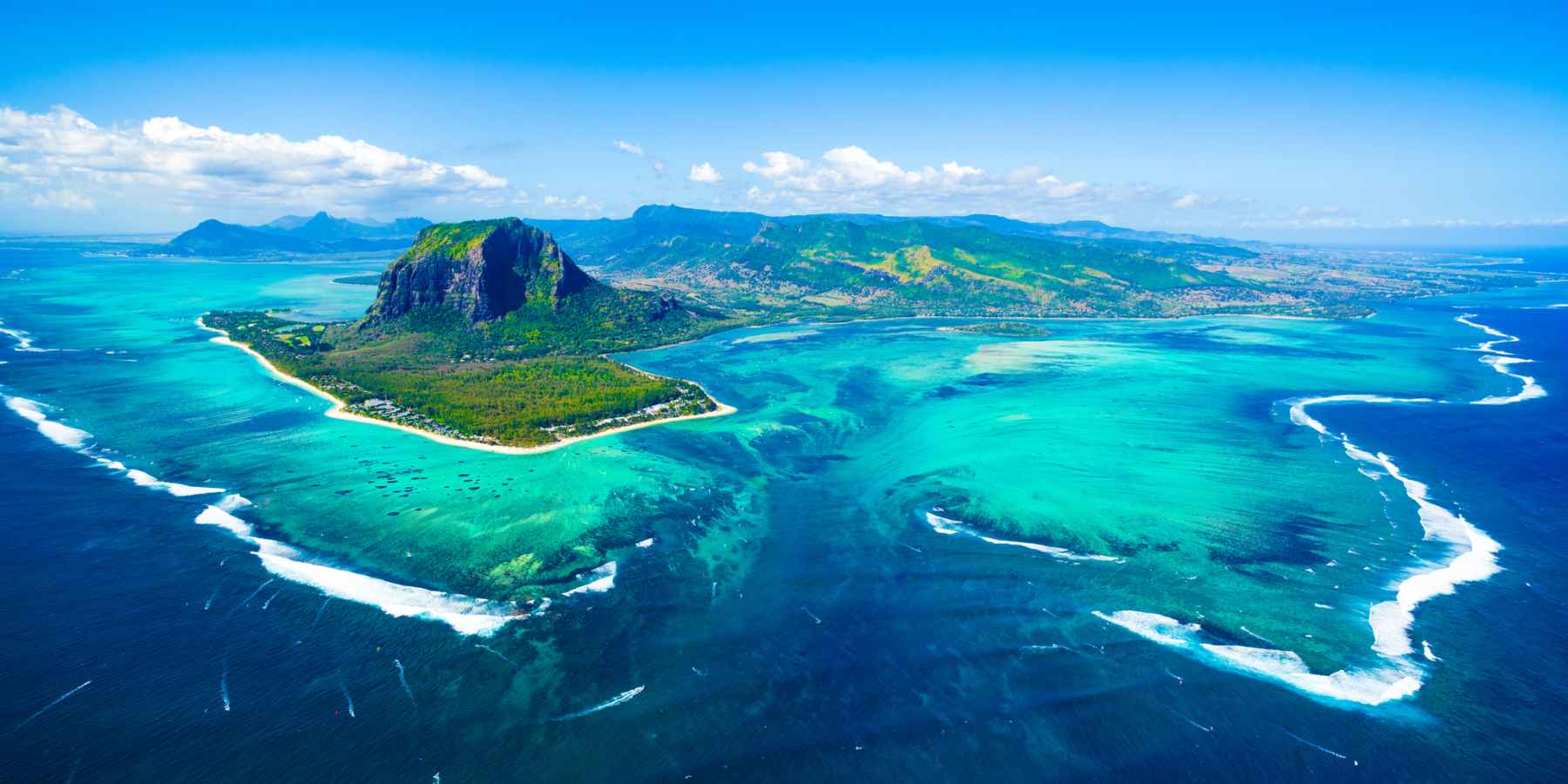
- Season: Winter/Spring
- Temperature: 24°C high, 18ºC low
- Time zone: GMT+4
- Currency: Mauritian Rupee
- Best for: Mixing volcanic beauty and coastal class
Mauritius sits off by itself, 500 miles east of Madagascar, in the middle of the Indian Ocean.
It’s a place ringed by coral reefs, with white sand beaches and a volcanic heart; where lush greenery spreads through the Black River Gorges National Park and craggy basalt peaks rise high and overlook the water. You can spot sperm whales and dolphins out at sea, while there are rainbow sand dunes to explore on the shores. The big reason to visit Mauritius in September is that it’s one of the drier months on the island; and you’ll be arriving just as Mauritius comes out of winter, with the daylight increasing and the wildlife waking up.
How to get there? The airport most international flights arrive to on Mauritius is (deep breath) Sir Seewoosagur Ramgoolam International Airport.
Ultimate Island Adventure in Mauritius | Much Better Adventures
Join an active small group trip to uncover the wild side of Mauritius as you hike, bike, canyon, kayak, snorkel and whale watch in this tropical paradise.
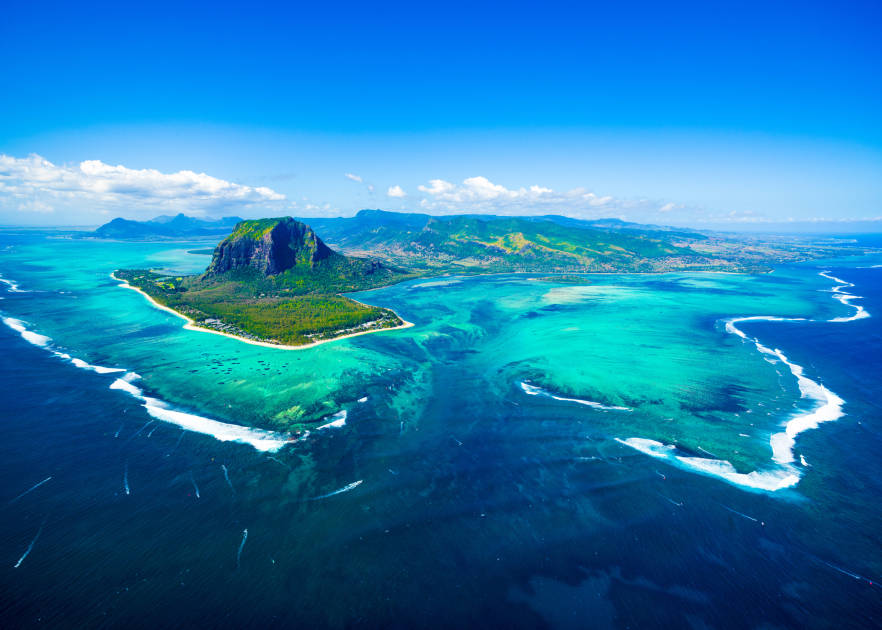
13. The Kumano Kodo, Japan
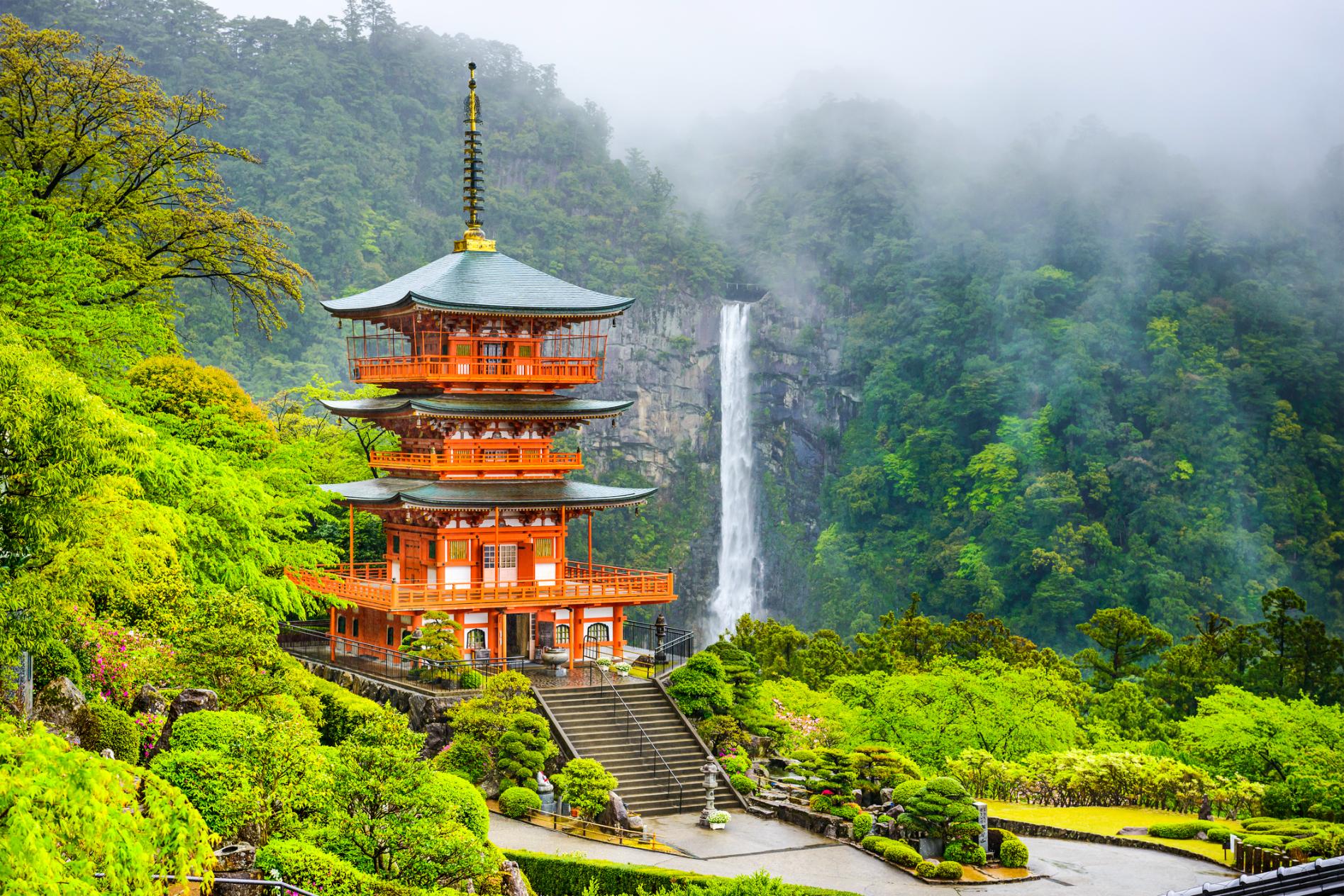
- Season: Summer/Autumn
- Temperature: 29°C high, 21ºC low (for Osaka)
- Time zone: GMT+4
- Currency: Mauritian Rupee
- Best for: An immersion in autumnal forest
The Kumano Kodo is an 190-mile (370km) network of pilgrimage trails. All in all, it consists of five interconnected routes which run through the Kumano region of Japan, on the mountainous Kii Peninsula, south of Osaka. These routes have been walked for over 1000 years, and they still are today. In fact, they’re the only pilgrimage routes in the world with a UNESCO World Heritage designation, other than the famous Camino de Santiago, which runs from Porto in Portugal to Santiago de Compostela in Spain. Walk the route in September and you’ll be doing so outside the busy summer months, and just as the forests begin to colour for autumn.
The trail is also hot and humid, and walking it in September avoids the worst of the heat.
How to get there? Japan has an excellent rail service, which extends to the Kii Peninsula. The nearest international airport is the Kansai International, which is just outside of Osaka.
The Ultimate Adventure Through Japan | Much Better Adventures
Join a small group of travellers to hike to Japan’s iconic sites & wild spots via neon cities, ancient temples, sacred mountains and pilgrimage trails.
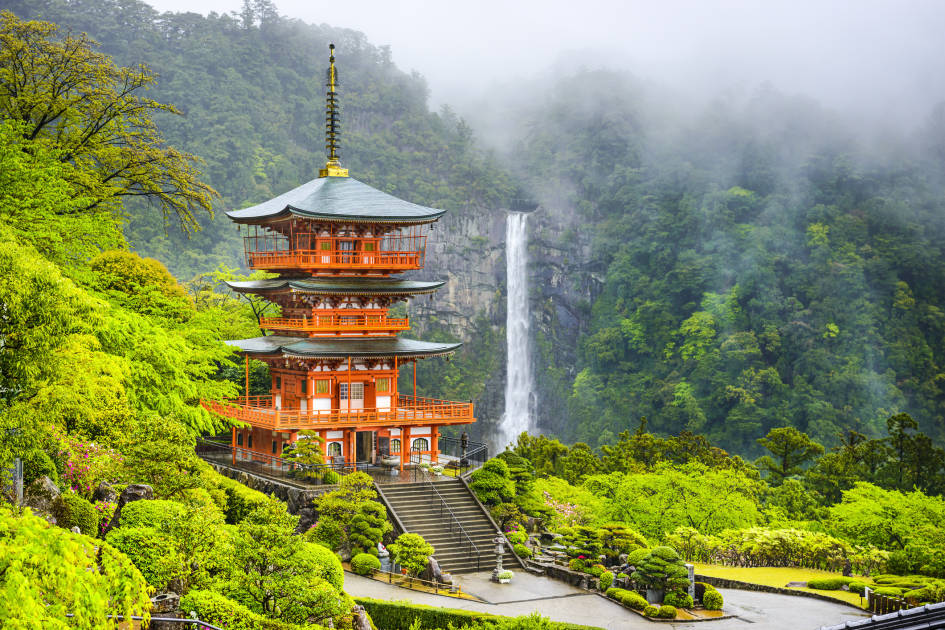
14. Bali, Indonesia
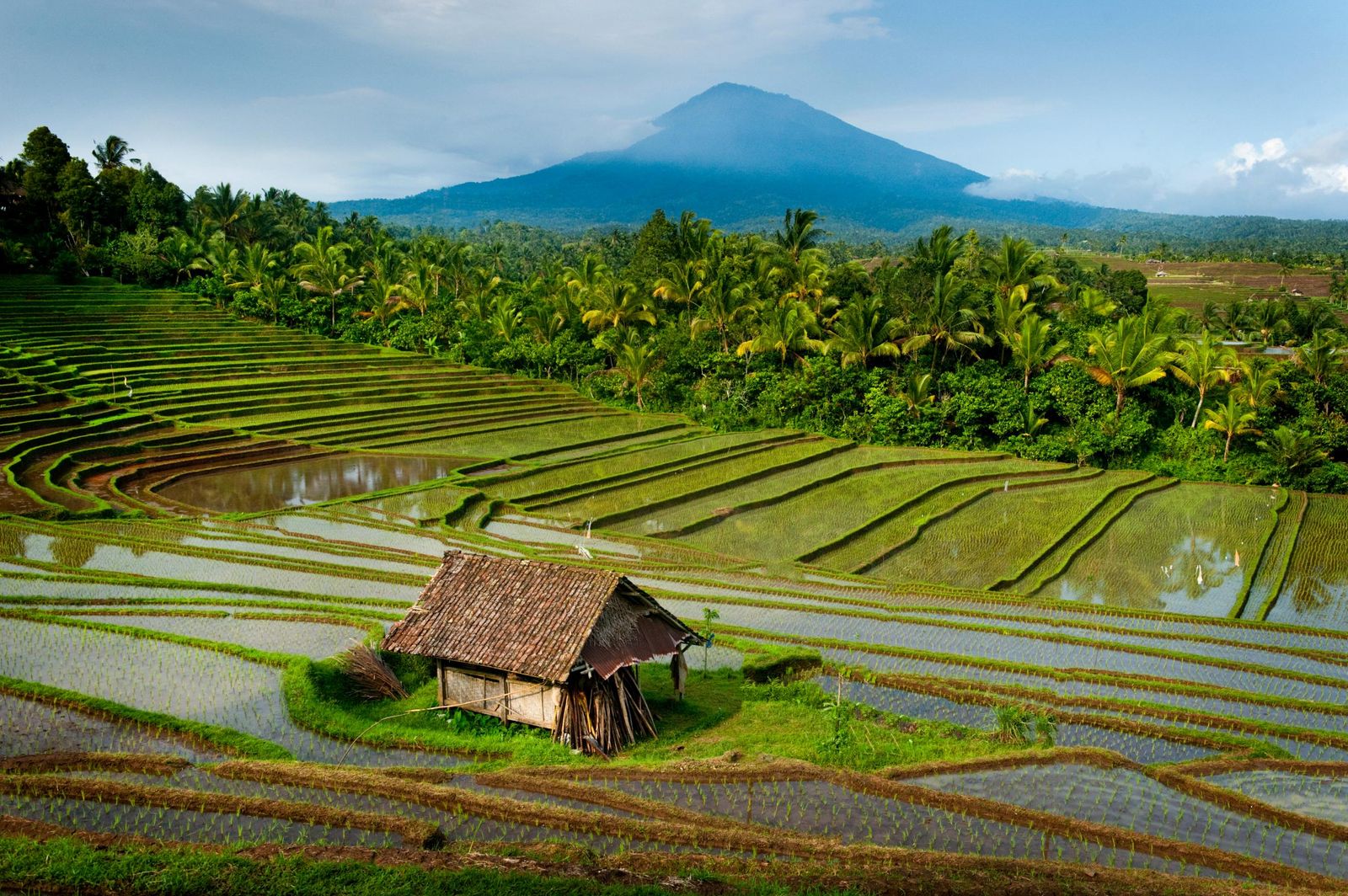
- Season: Dry season
- Temperature: 31°C high, 22ºC low
- Time zone: GMT+8
- Currency: Indonesian Rupiah
- Best for: A coast to coast in the sun
There was a time where if you mentioned Bali the eyes of those with wanderlust would light up. It’s had a bit of a tougher time recently. Usually when Bali enters the news and tourism is involved, it has something to do with overtourism, which does indeed plague parts of the island. But this is a bigger place than most realise, and if you get off the beaten track you can still find the tranquillity, lush nature and beautiful coastlines that make this island so utterly special.
We’d recommend checking out this 100km coast to coast walk across Bali, which takes 62 miles (100km) across the island, avoiding the tourist traps. “Some people think that Bali is all about Kuta,” says Benny Onor, a local tourism expert involved in the creation of the route. “By going coast-to-coast, we can show it’s really not. We want to show the different landscapes that Bali has. The trail goes through dense jungle, through rice fields and plantations, past waterfalls and up mountains. In some places along this route, you won’t find another tourist there at all.”
Why September? It’s hot, and the chances of rain are incredibly low. One for sun-seekers.
How to get there? The international airport on Bali is Ngurah Rai International Airport.
Coast to Coast Traverse of Bali | Much Better Adventures
Join local, expert guides on this unique trek that takes you far from Bali’s crowds, hiking through lush landscapes and swimming in hidden waterfalls.
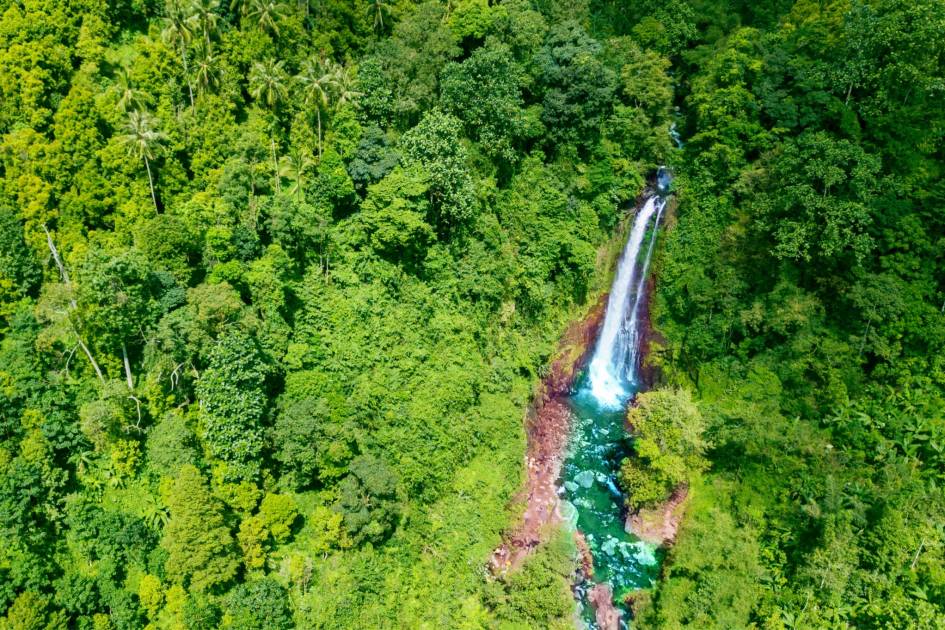
15. Sarawak, Borneo (Malaysia)
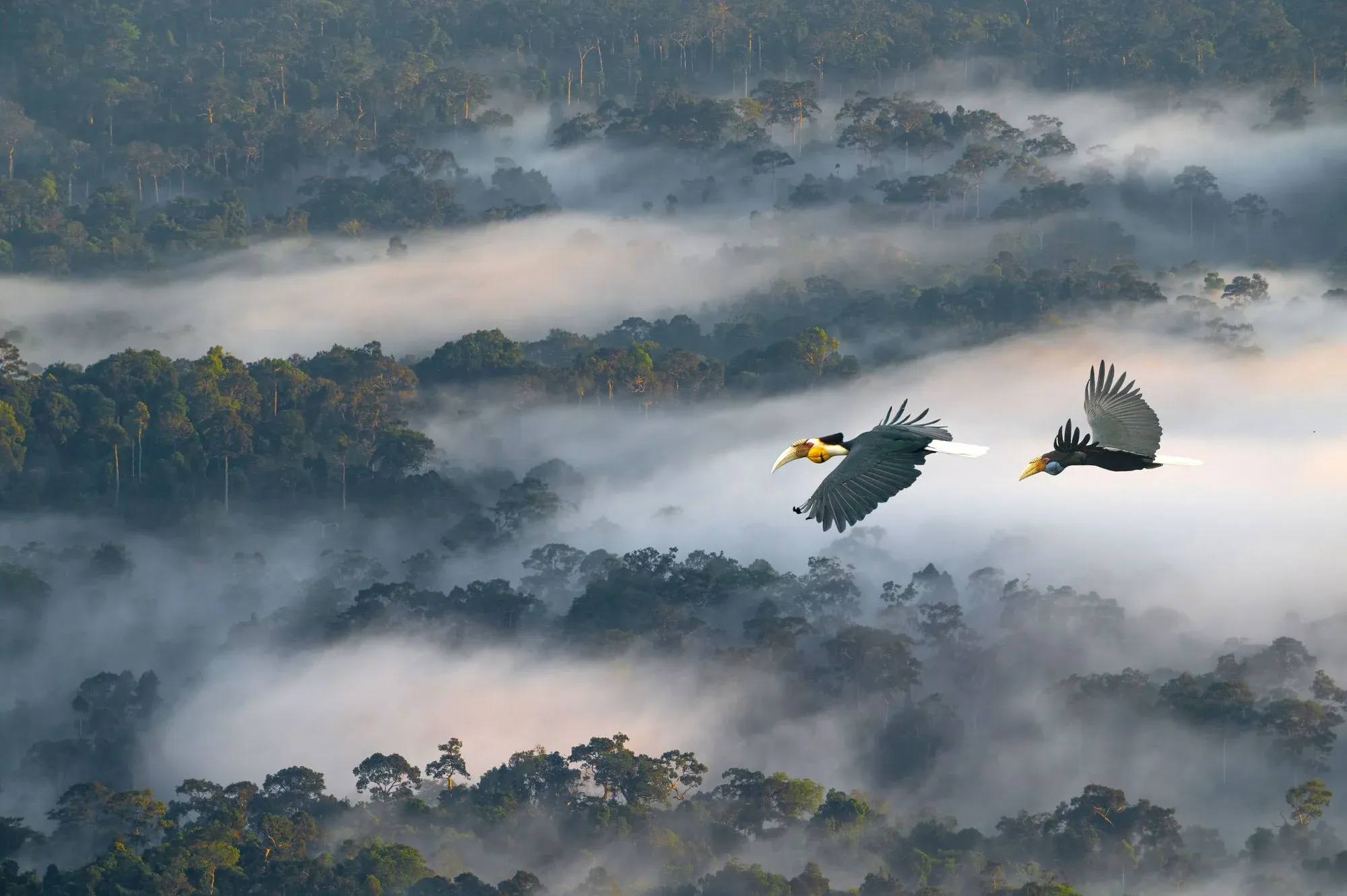
- Season: Dry/Wet season
- Temperature: 33°C high, 22ºC low (for Borneo)
- Time zone: GMT+8
- Currency: Malaysian Ringgit
- Best for: Rainforest wildlife spotting
Borneo is the third largest island in the entire world, and it’s a place with ancient rainforests, with extensive wetland and mangroves, with mountains which reach up over 4,000m and with white sandy beaches – all of which are bustling with (often endemic) wildlife. The island is divided into Malaysia, Indonesia and Brunei. The most popular area to visit is the Malaysian side, which is divided into the states of Sabah and Sarawak. The former is home to beautiful rainforests and famous rivers, but visit the lesser known Sarawak and you can visit huge national parks and barely see another tourist – plus there’s the wonderful, eclectic city of Kuching to explore.
In September, the weather in Borneo is slightly less predictable than in the months previous. You’ll likely get a bit of rain and a bit of sun. So why go then? Because with rain, comes life, and if you visit Borneo in September, you have the ideal conditions for spotting the famous wildlife – from orangutans and pygmy elephants to hornbills, gibbons and brightly-coloured frogs.
How to get there? To explore Sarawak, first fly to the Kuching International Airport in Borneo.
The Ultimate Adventure Through Wild Borneo | Much Better Adventures
Join a small group adventure in Sarawak to hang out with orangutans and hike through steamy rainforests. Relax on wild tropical beaches along the way.

16. Tian Shan Mountains, Kyrgyzstan
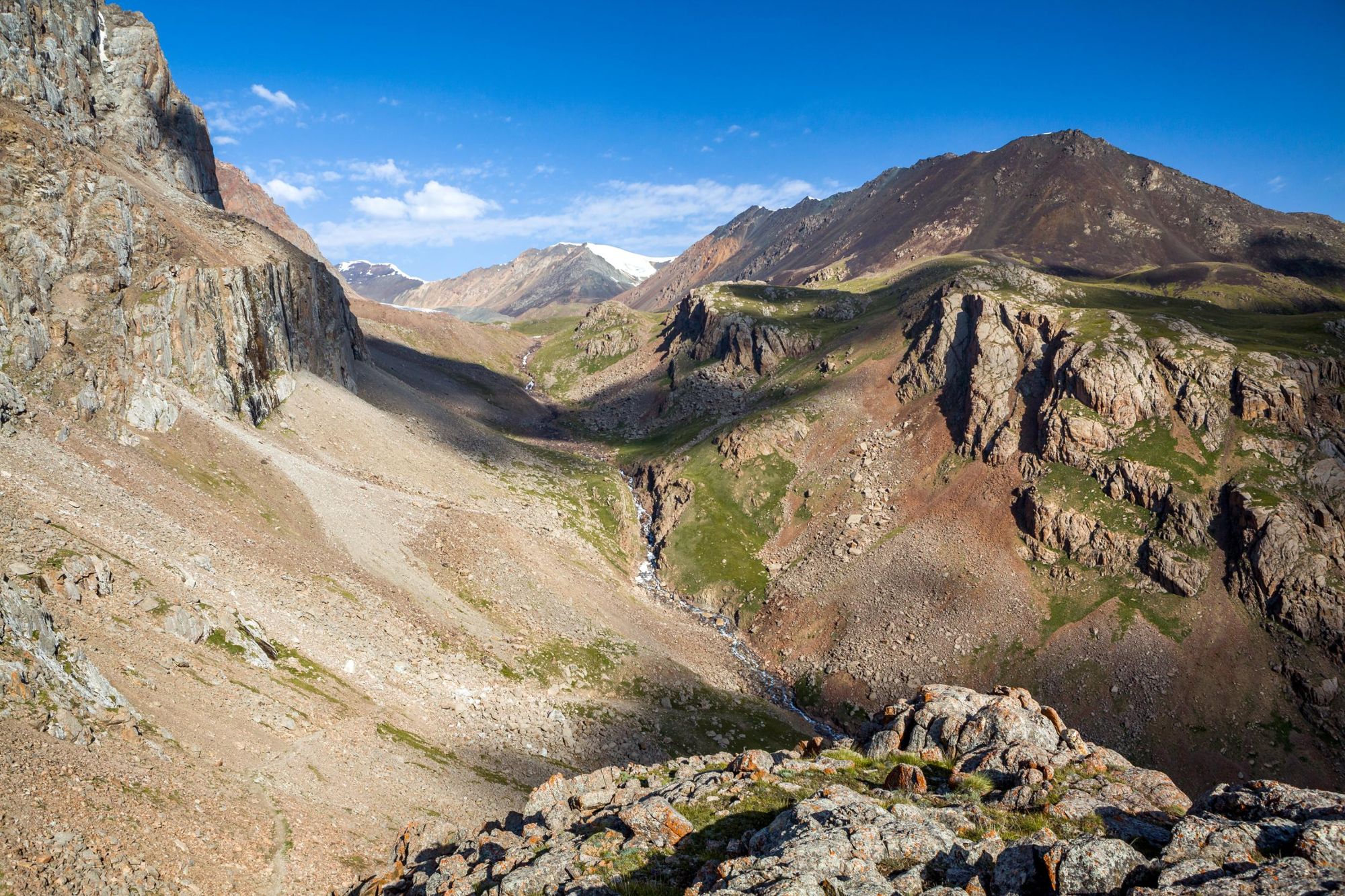
- Season: Summer/Autumn
- Temperature: 8°C high, -4ºC low
- Time zone: GMT+6
- Currency: Kyrgystani Som
- Best for: A true escape
Think Kyrgyzstan and there’s a good chance that you think of big mountains and vast wilderness. If you do, then you’re thinking of the Tian Shan Mountains. This is one of the most spectacular mountain ranges in Central Asia. Visit, and you can walk the 3,800m (12,467ft) Jukku Pass, pass glimmering mountain lakes and meet the legendary eagle hunters.
During autumn, which runs from September to November, the skies are at their clearest, and the rivers run slightly lower, giving them a unique turquoise blue blaze. The higher passes, like the Jukku Pass, may be sprinkled with snow, while village farms are vibrant with colours.
How to get there? The most popular way to reach Kyrgyzstan is to fly into Manas International Airport in Bishkek.
Trek the Tian Shan Mountains of Kyrgyzstan | Much Better Adventures
Our hiking trip through the mountains of Central Asia is for adventurous souls. Meet Kyrgyz nomads, discover otherworldly landscapes and sleep under the stars.

17. The Jordan Trail, Jordan
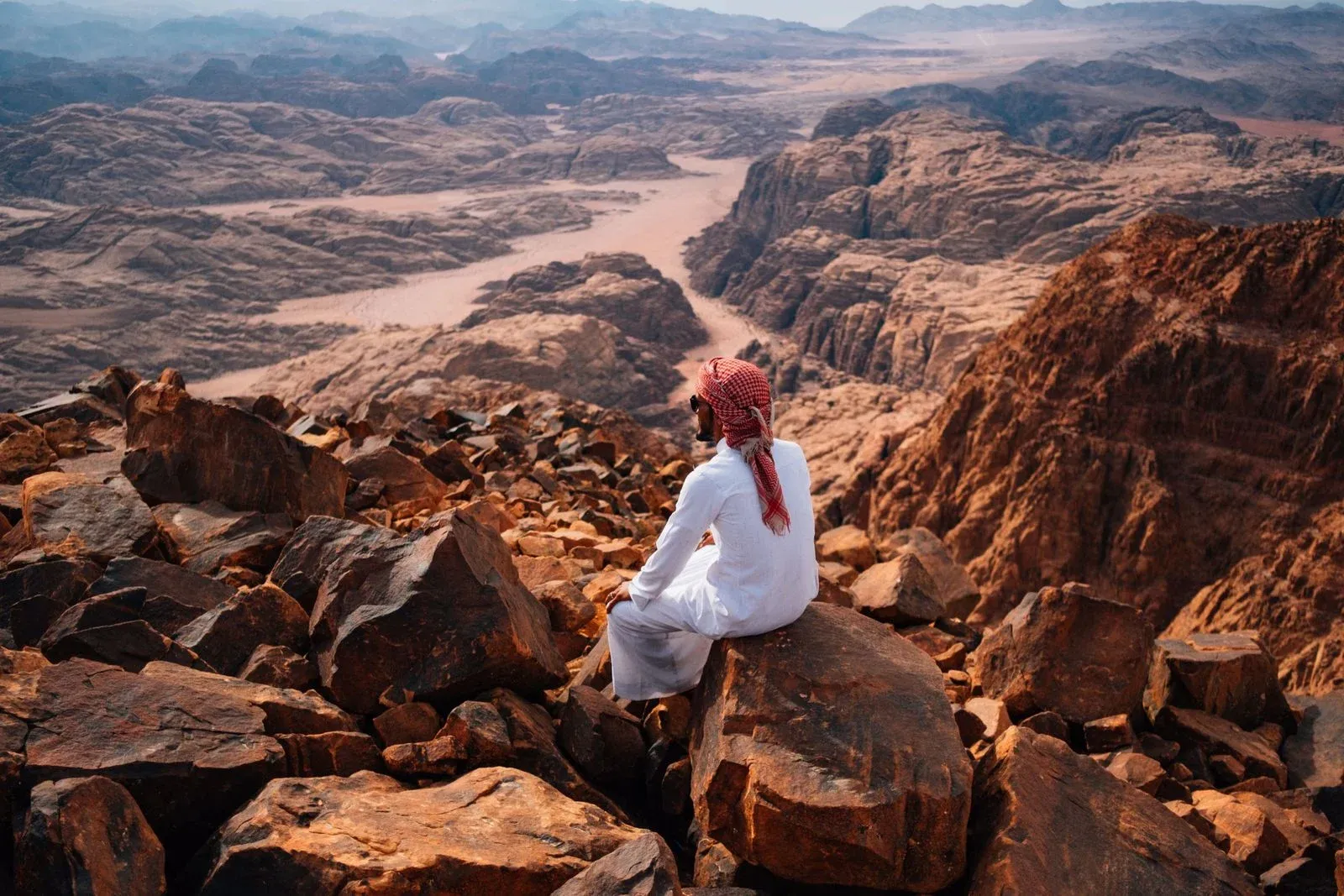
- Season: Summer/Autumn
- Temperature: 28°C high, 14ºC low (for Petra)
- Time zone: GMT+3
- Currency: Jordanian Dinar
- Best for: Exploring an ancient site in a new way
The Jordan Trail is a 420-mile (675km) route which runs from Umm Qais, a town in the north of the country, all the way to Aqaba and the Red Sea in the south. On the way, you’ll pass through the capital city of Amman, you’ll visit the ancient city of Petra, and you’ll visit the famous desert of Wadi Rum, an expansive red and orange landscape dotted with sandstone monoliths.
The trail was invented to expand the benefits of tourism beyond Petra, and benefit locals. “Some people who live just an hour away from Petra never get to see the benefit of the travellers who come through the area,” says Ayman Abd Alkareem, one of the founders.
In September, You get warm weather, but it’s a lot more manageable than the often oppressively-warm summer. You’ll also miss the crowds. “These trails help to stretch the season,” says Ayman.
How to get there? The capital of Jordan, Amman, and its airport are the gateway to Jordan.
Cycle the Jordan Trail to Petra | Much Better Adventures
Pedal with local experts through desert landscapes on sections of the Jordan Bike Trail. You’ll pause at Petra, be wowed by Wadi Rum and float in the Dead Sea.

18. The Himalayas, Nepal
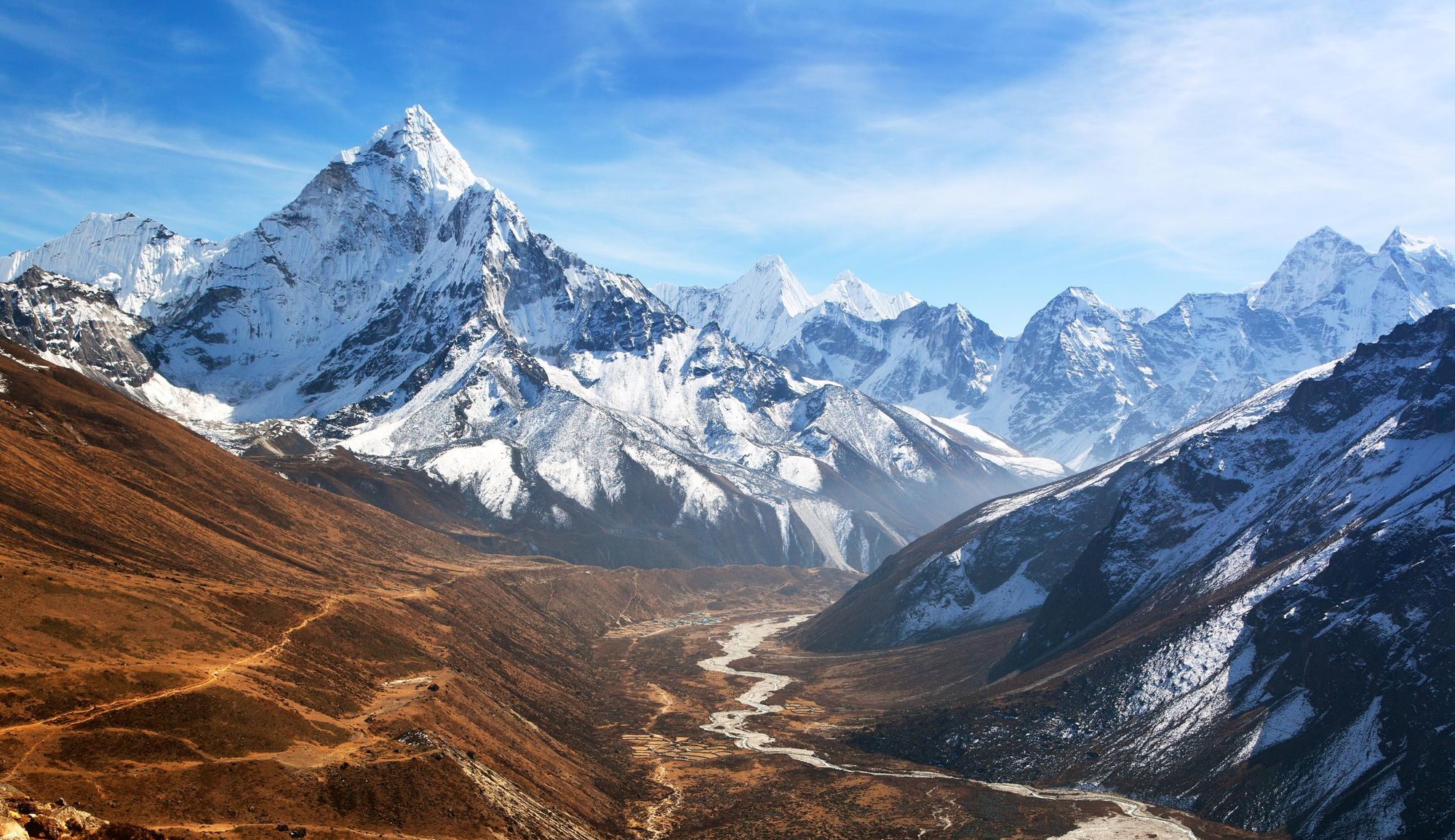
- Season: Summer/Autumn
- Temperature: 17°C high, 7ºC low (for Lukla)
- Time zone: GMT+5:45
- Currency: Nepalese Rupee
- Best for: A full Himalayan experience
Anyone who loves mountains has considered visiting Nepal. This is the home of the highest mountains of the world; of the mighty Himalayas and the towering Mount Everest. Walk to Everest Base Camp on Lukla, take on the Annapurna Circuit or if you’ve caught the mountaineering bug, test yourself at high altitude by walking to Mera Peak. It’s one of the highest peaks in the world that you can reach without technical mountaineering equipment.
September is primetime for trekking in Nepal. The weather isn’t too hot or too cold, the transfers and travel are reliable and in September, Namche Bazaar is buzzing with hikers. There’s an energy to these adventurous pursuits which you don’t always get at other times of the year.
How to get there? You’ll first need to get to Kathmandu. If it’s the Everest Base Camp trek that you’re doing, you’ll then want to fly on to the famous Tenzing-Hillary airport in Lukla.
Climb Mera Peak (6461m) | Much Better Adventures
Join expert climbing guides in the Himalayas to conquer the highest trekking peak in Nepal and bask in epic views of the world’s highest mountains.
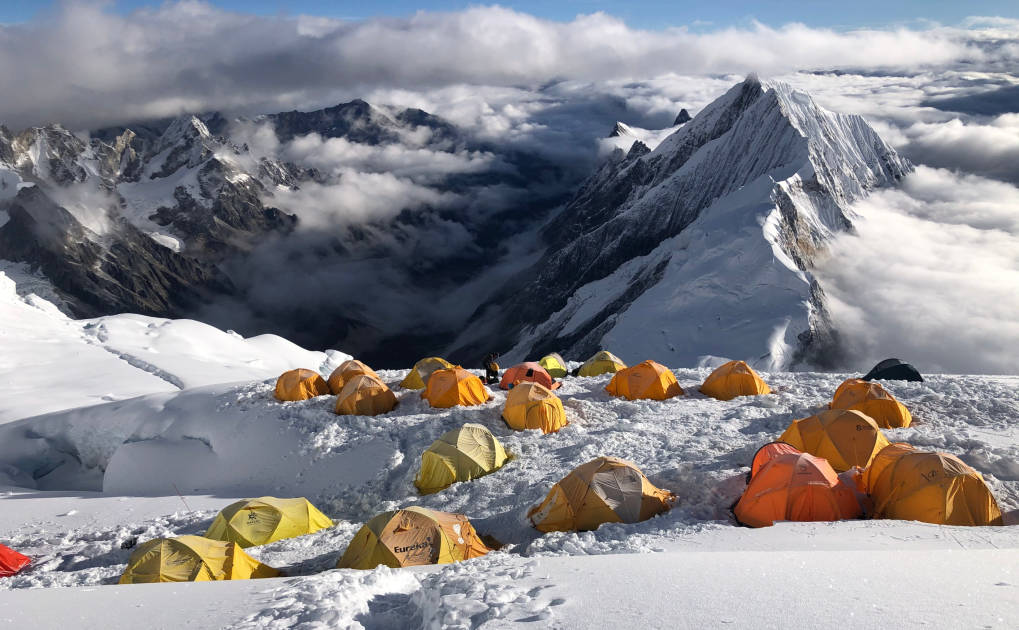
19. Cao Bang, Vietnam
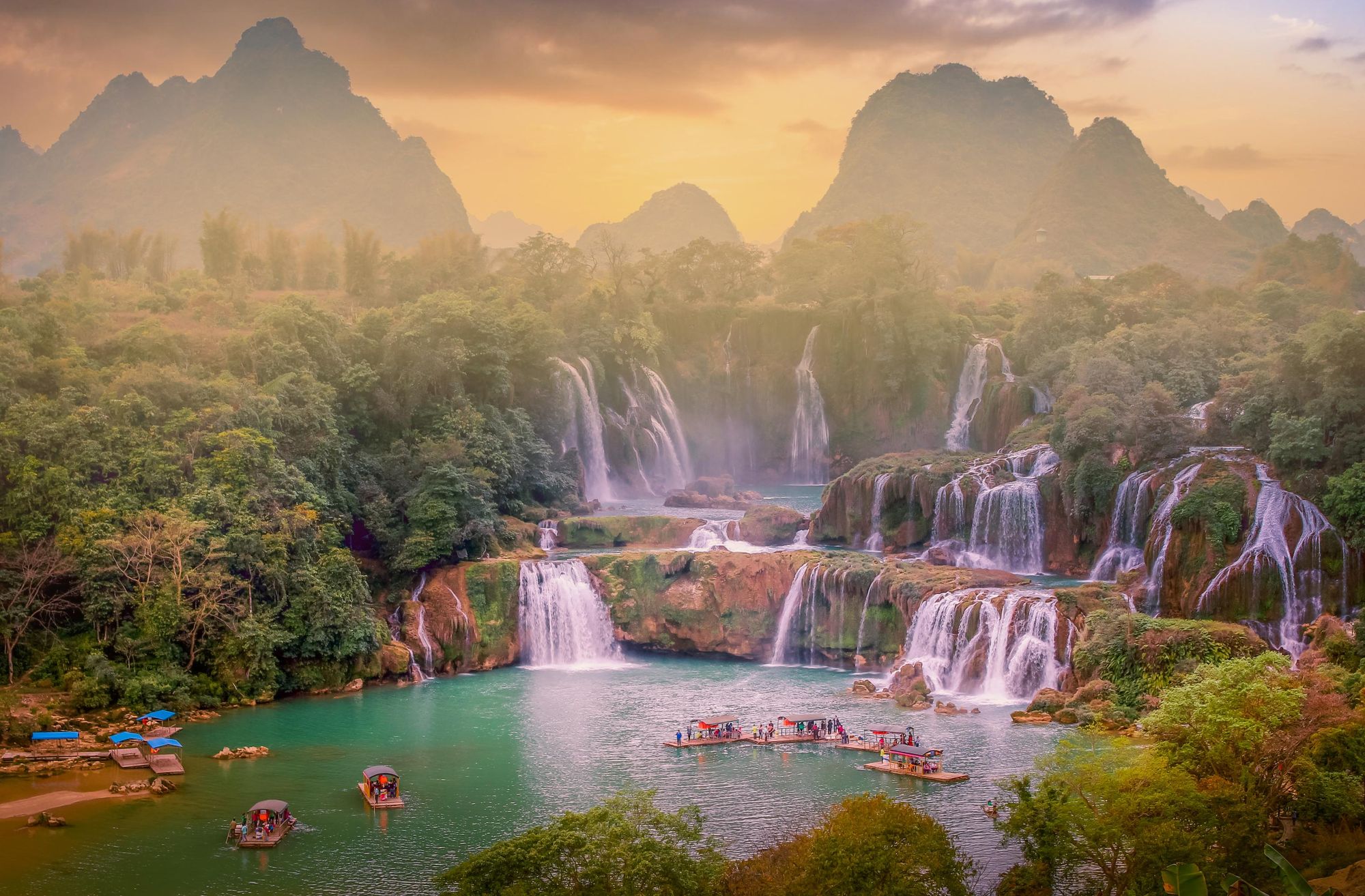
- Season: Summer/Autumn
- Temperature: 30°C high, 22ºC low
- Time zone: GMT+7
- Currency: Vietnam Dong
- Best for: Seeking paradise in September
This sensational province of Northern Vietnam is bursting with must–see areas, none moreso than the Bản Giốc Waterfall, which is the fourth largest in the world and looks an awful lot like the sort of thing fictional movie characters stumble across on their way to the Lost City of Atlantis. Imagine water tumbling into huge lagoons, across various levels, surrounded by otherwise intense greenery. September is the low season here, meaning that you can explore the falls without the crowds. More frequent rainfall means full, wonderful waterfalls, and you’re also able to swim in the surrounding waters, to cool yourself down in the autumn heat.
How to get there? Fly to Hanoi and then you can grab a five hour bus to Cao Bang.
Trek the Remote Trails of Northern Vietnam | Much Better Adventures
Join a small group of adventurers to explore a wild corner of Southeast Asia, on this remote trek in Vietnam’s far north. Led by local, expert guides.

20. Te Araroa, New Zealand
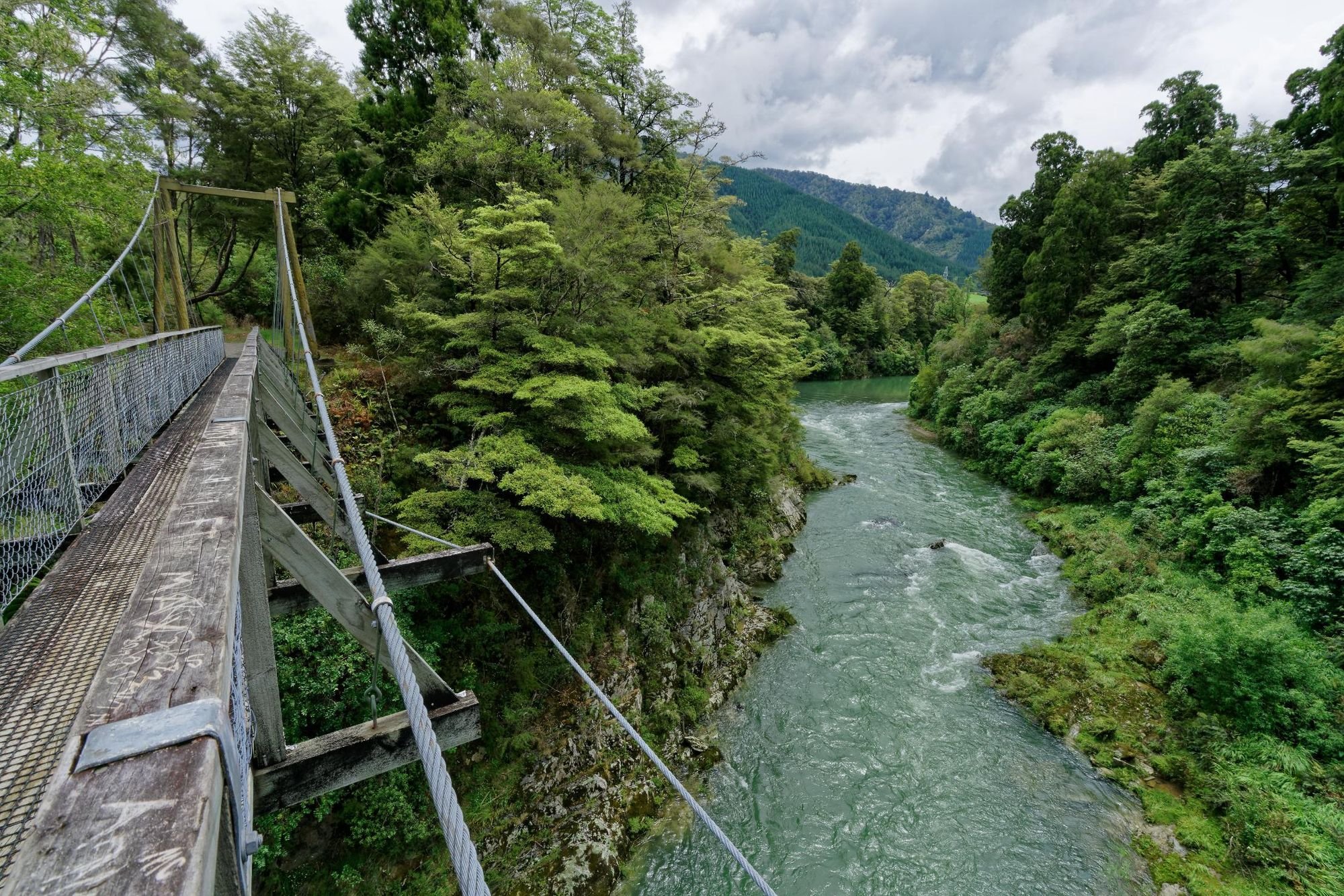
- Season: Winter/Spring
- Temperature: 17°C high, 9ºC low (for Auckland)
- Time zone: GMT+12
- Currency: New Zealand Dollar
- Best for: The island of New Zealand on one, big trail
The Te Araroa is the all-encompassing trail of New Zealand. It is the country on a walking route. Naturally, since the trail runs from Cape Reinga in the north of the north island to Bluff at the southern edge of the south island, this is an incredibly long trek. We’re talking about 1,864 miles (3,000km) in total, so if you do walk it all, it’ll take you a few months.
If you’re only going to walk a segment though – and you want to immerse yourself in it – you can do a lot worse than walking it in September, when spring has just sprung, and the scents of nature coming out and waterfalls gushing heavily as the snow melts off the mountains and tumbles on down. The Alexandra Blossom Festival is popular in September for cherry blossoms, though lovers of the outdoors will see plenty of native flora – the likes of totara, beech and Giant Kauri trees – and colourful flowers in full bloom while they’re out exploring in spring.
How to get there? Fly to Auckland (the capital, which is on the north island of New Zealand), then fly or get the bus to Kerikeri or Kaitaia. From their, take a tourist bus to Cape Reinga.
Coast to Coast Expedition across New Zealand | Much Better Adventures
Join a small group of active adventurers for the challenge of a lifetime, hiking, biking and rafting your way across the staggering landscapes of New Zealand’s South Island.

Inspired? Browse our full range of adventure holidays now!

